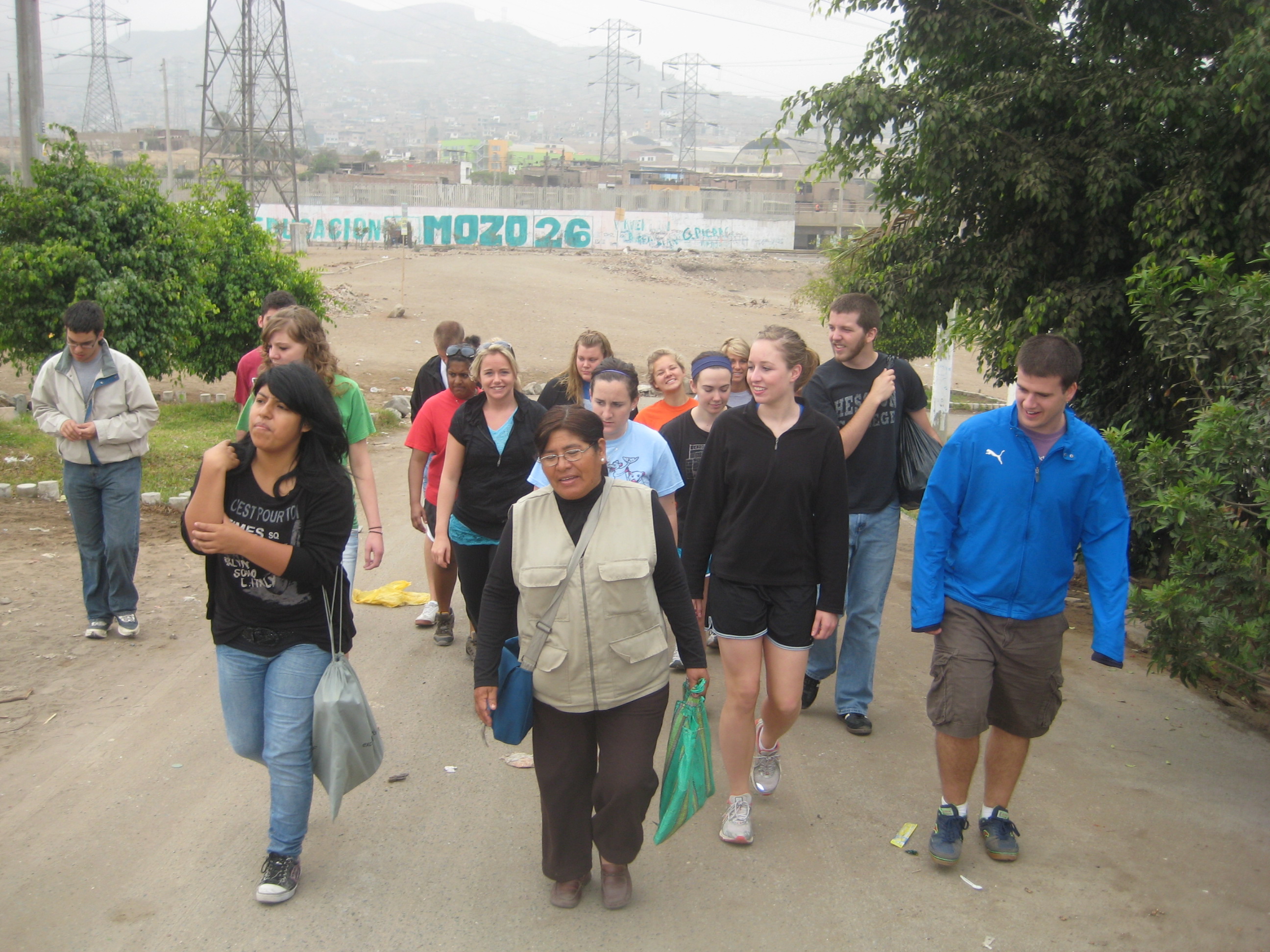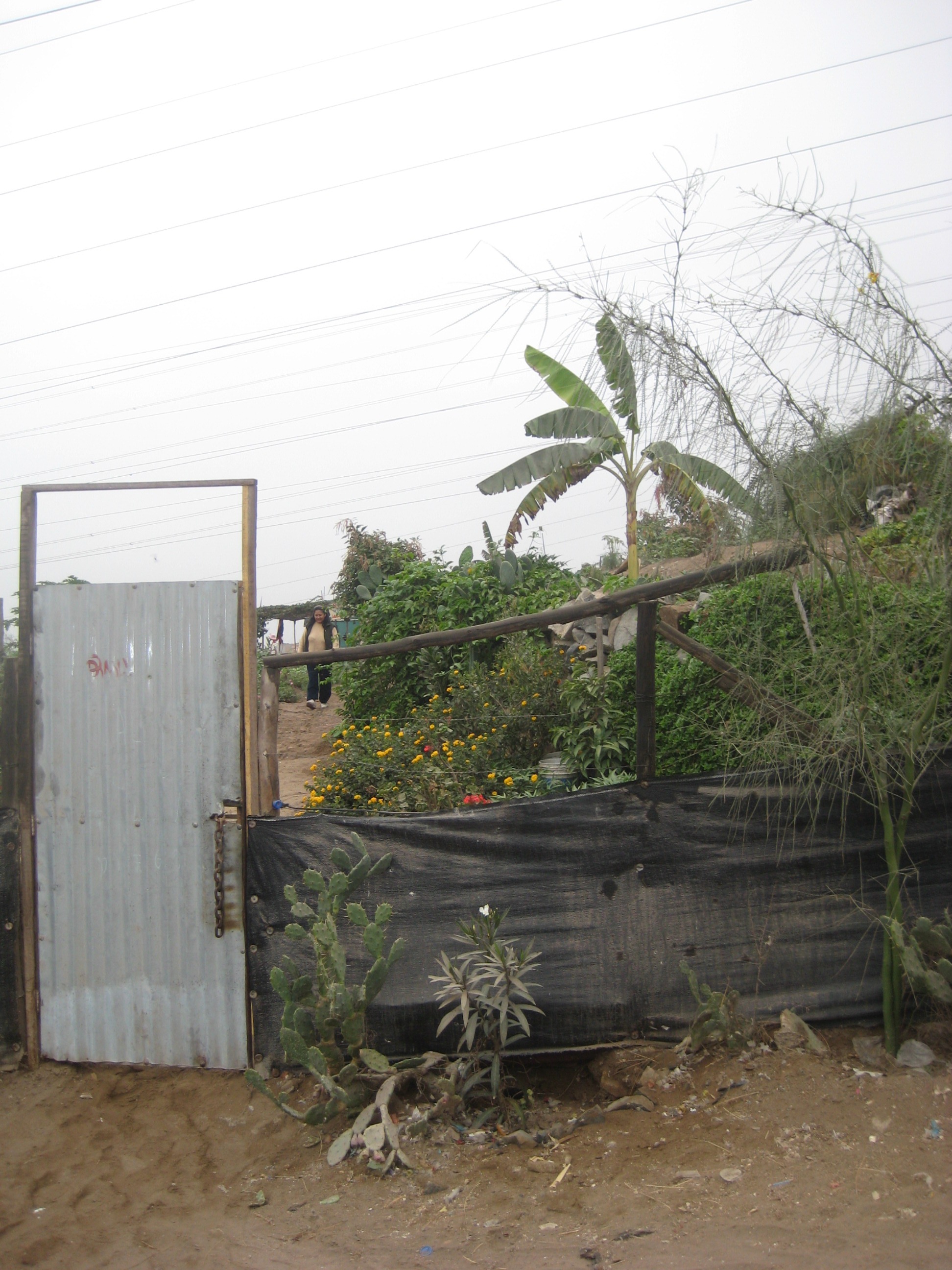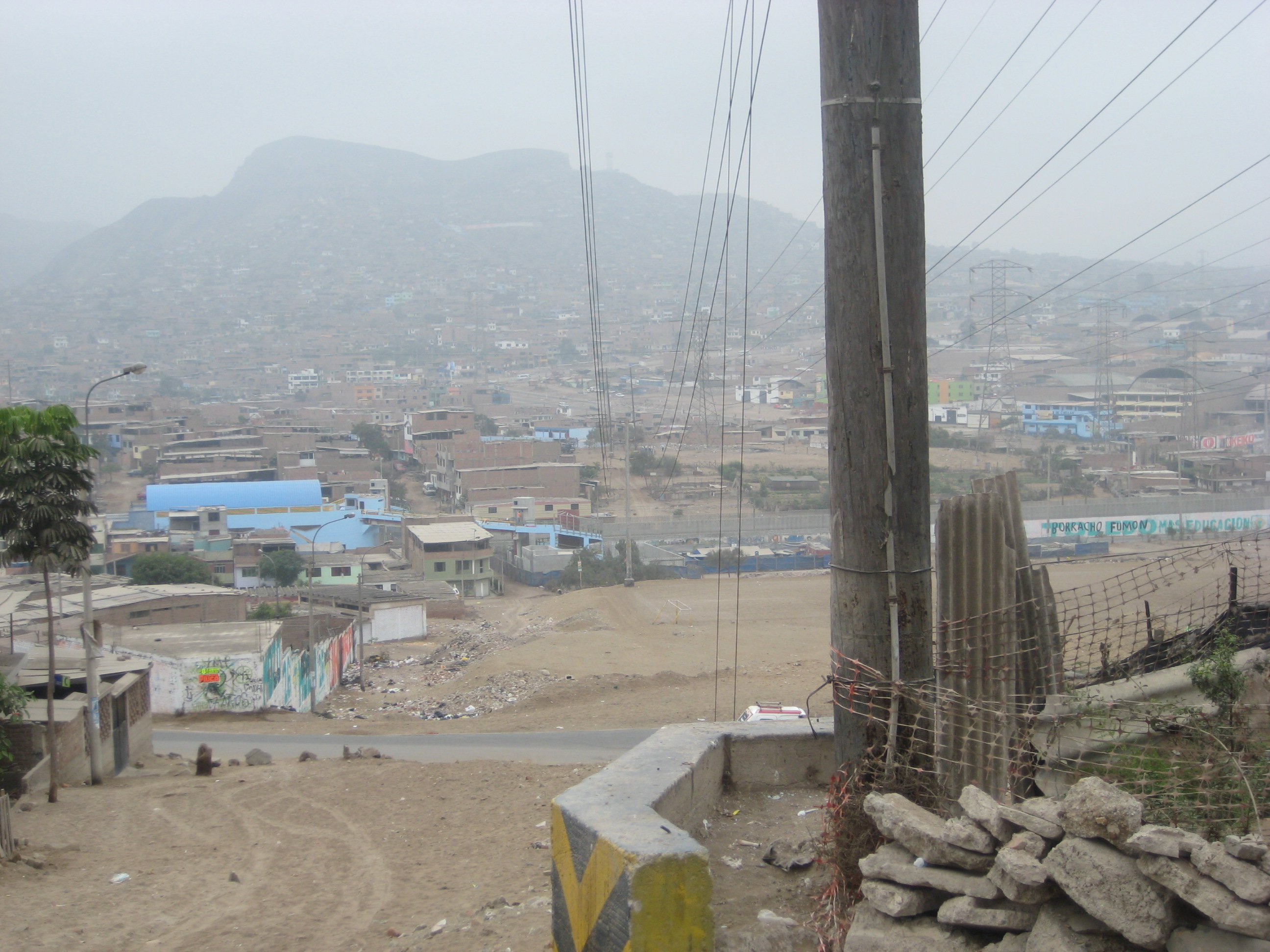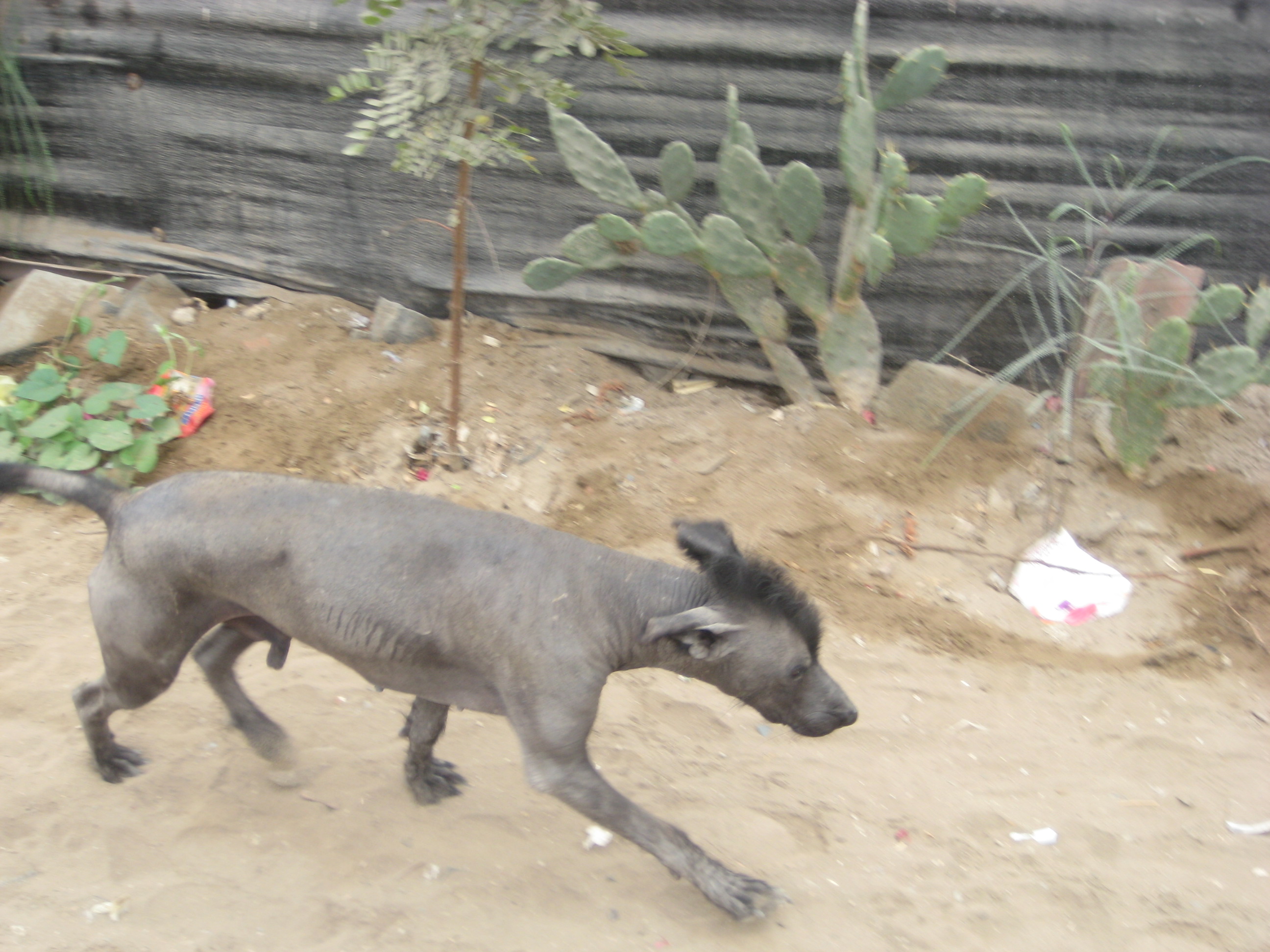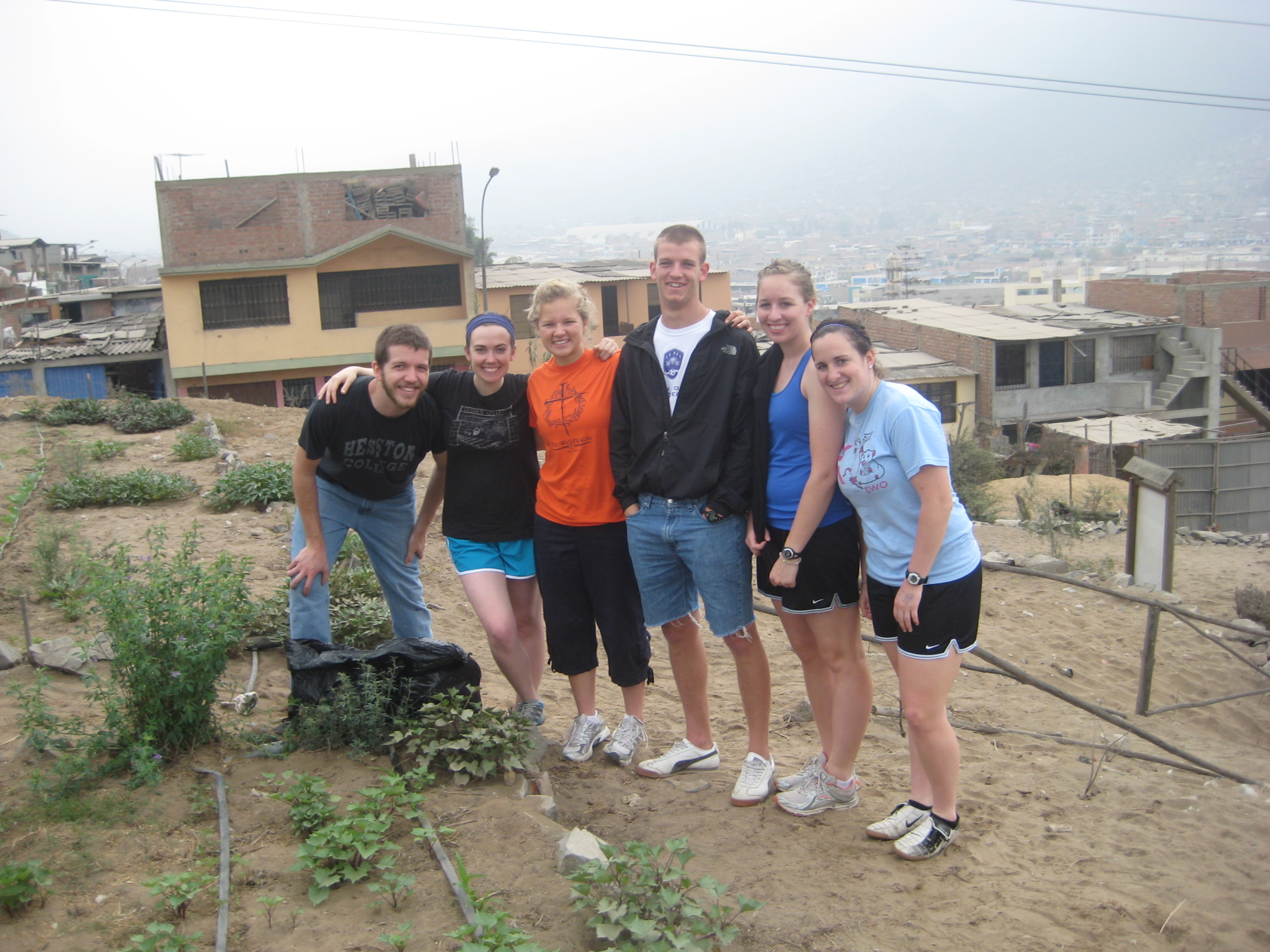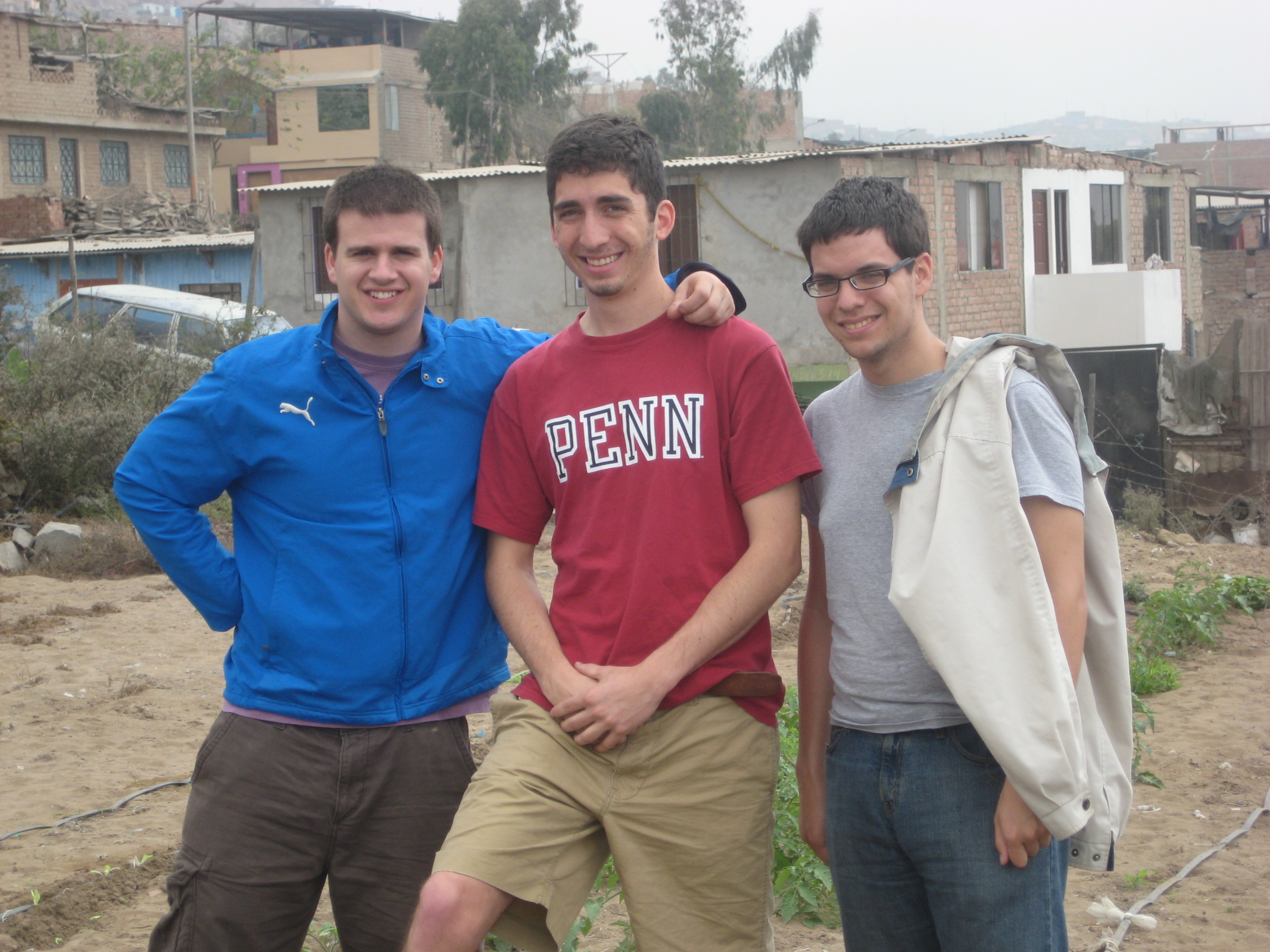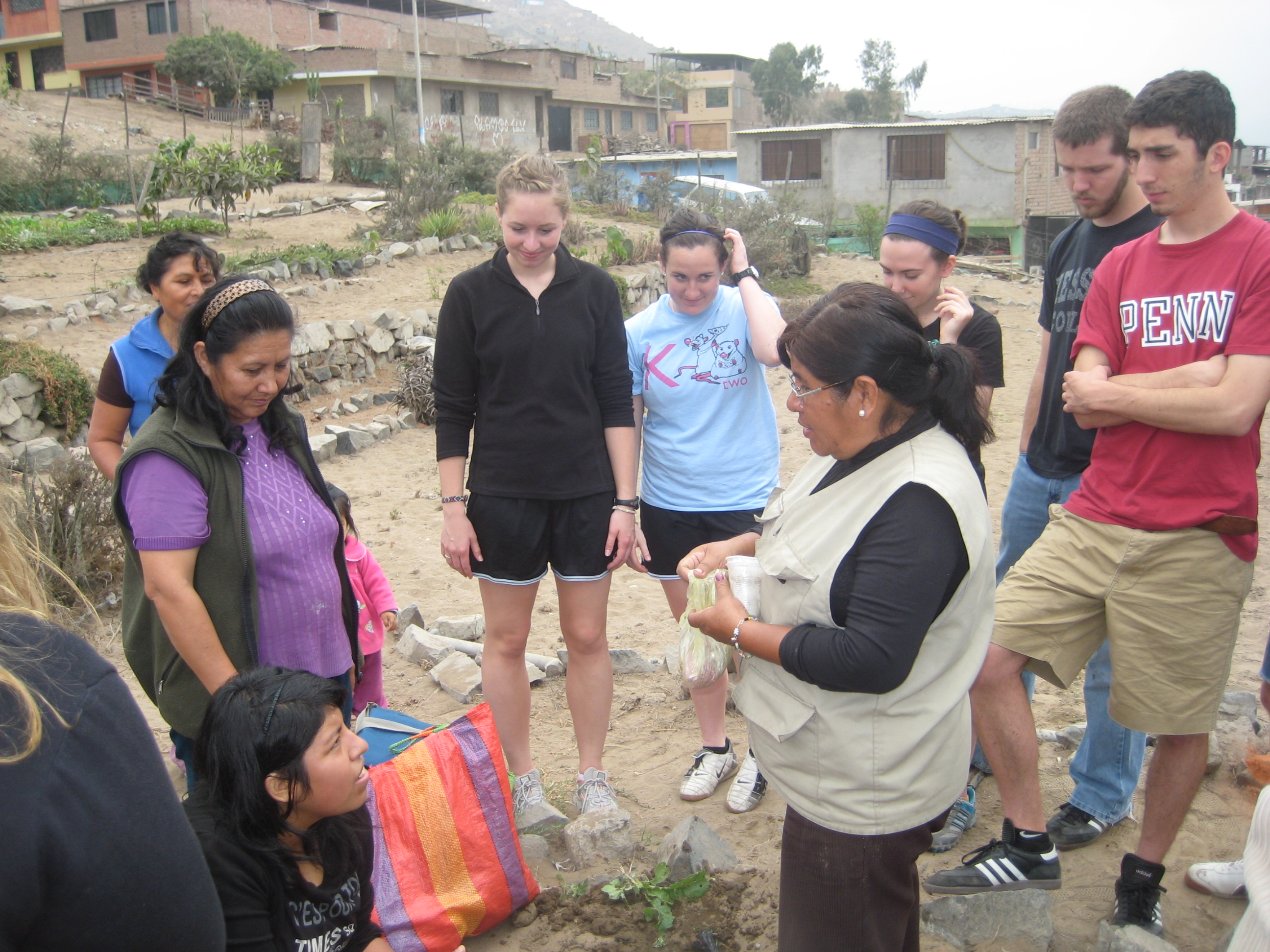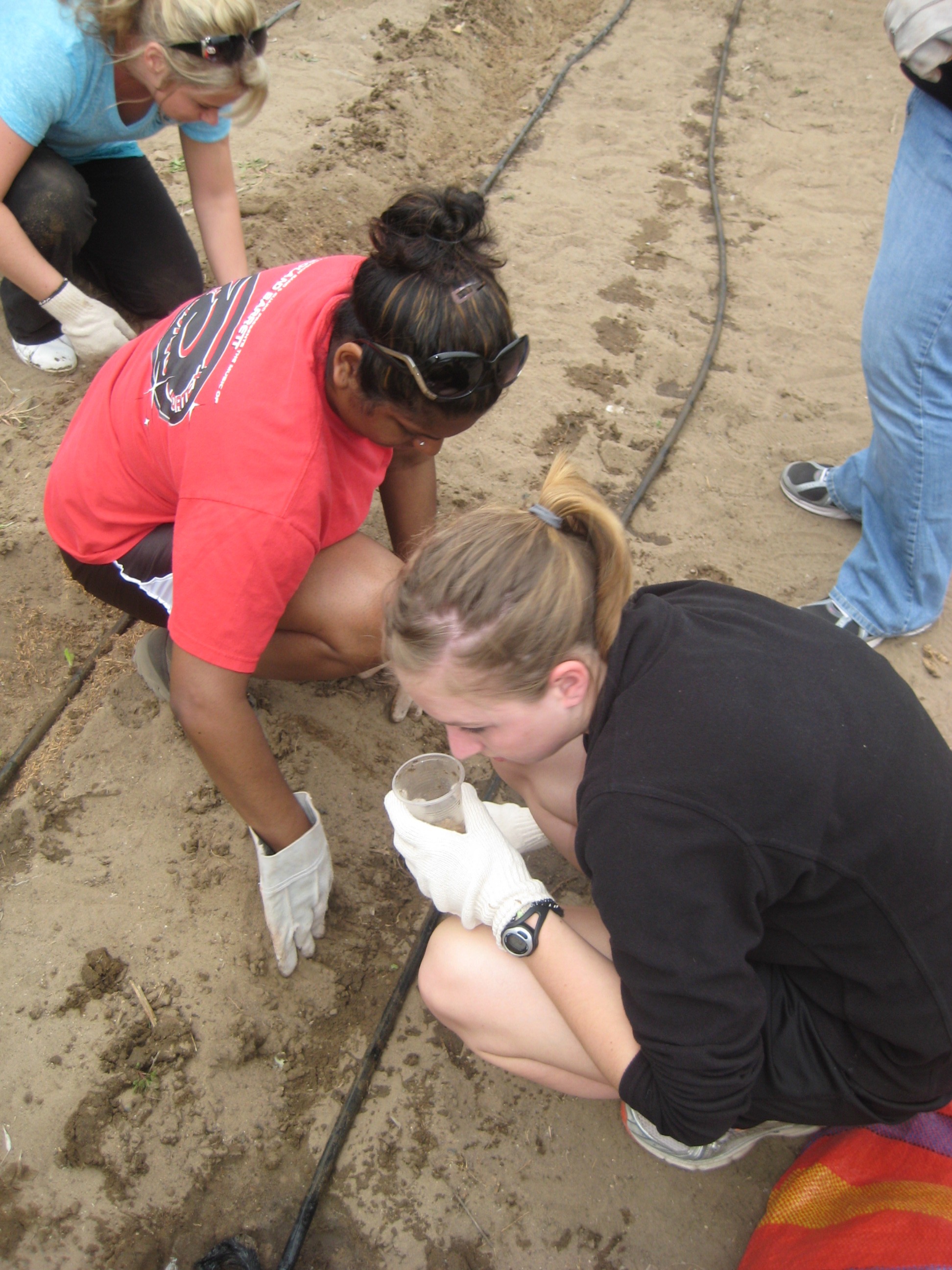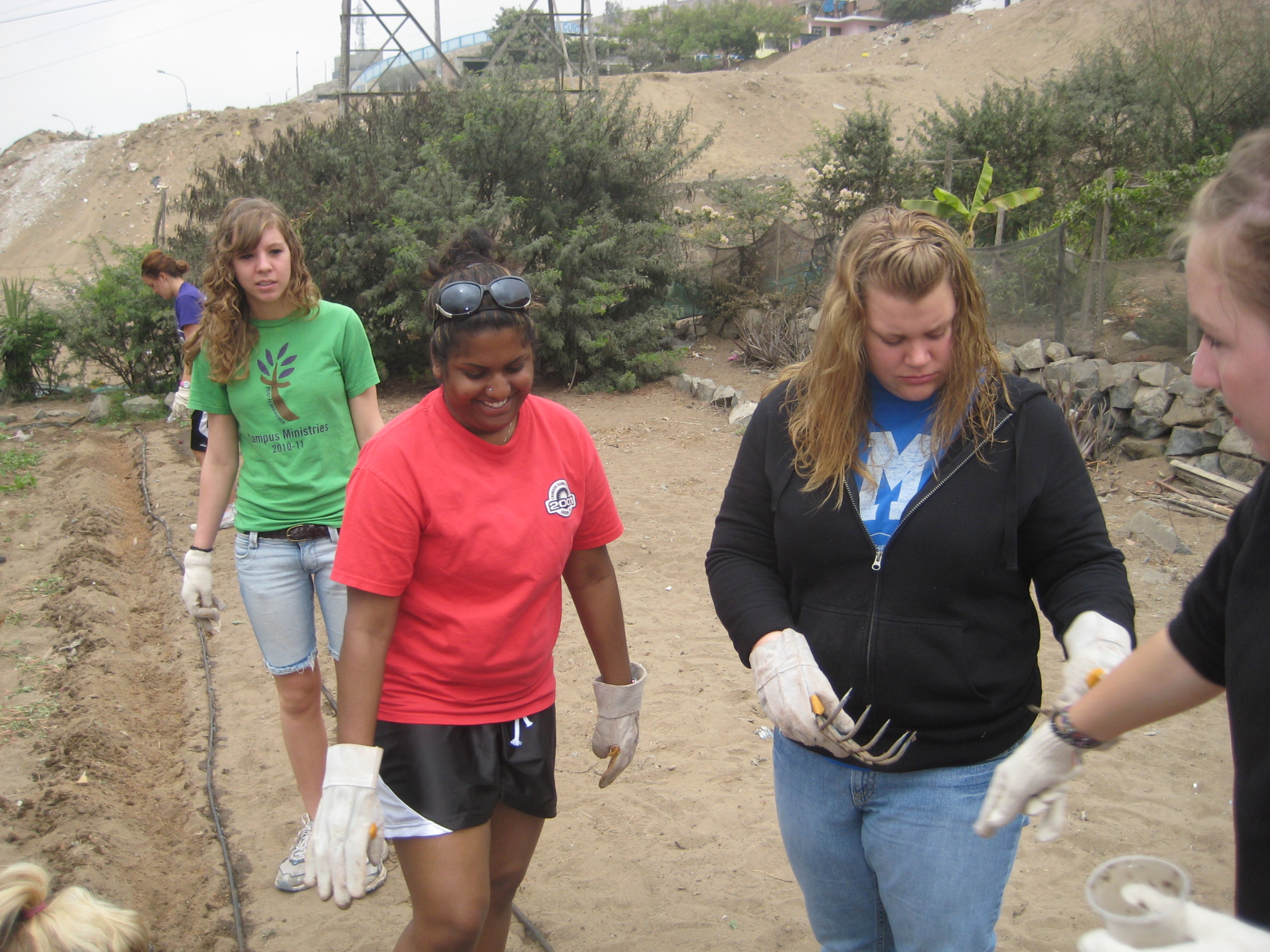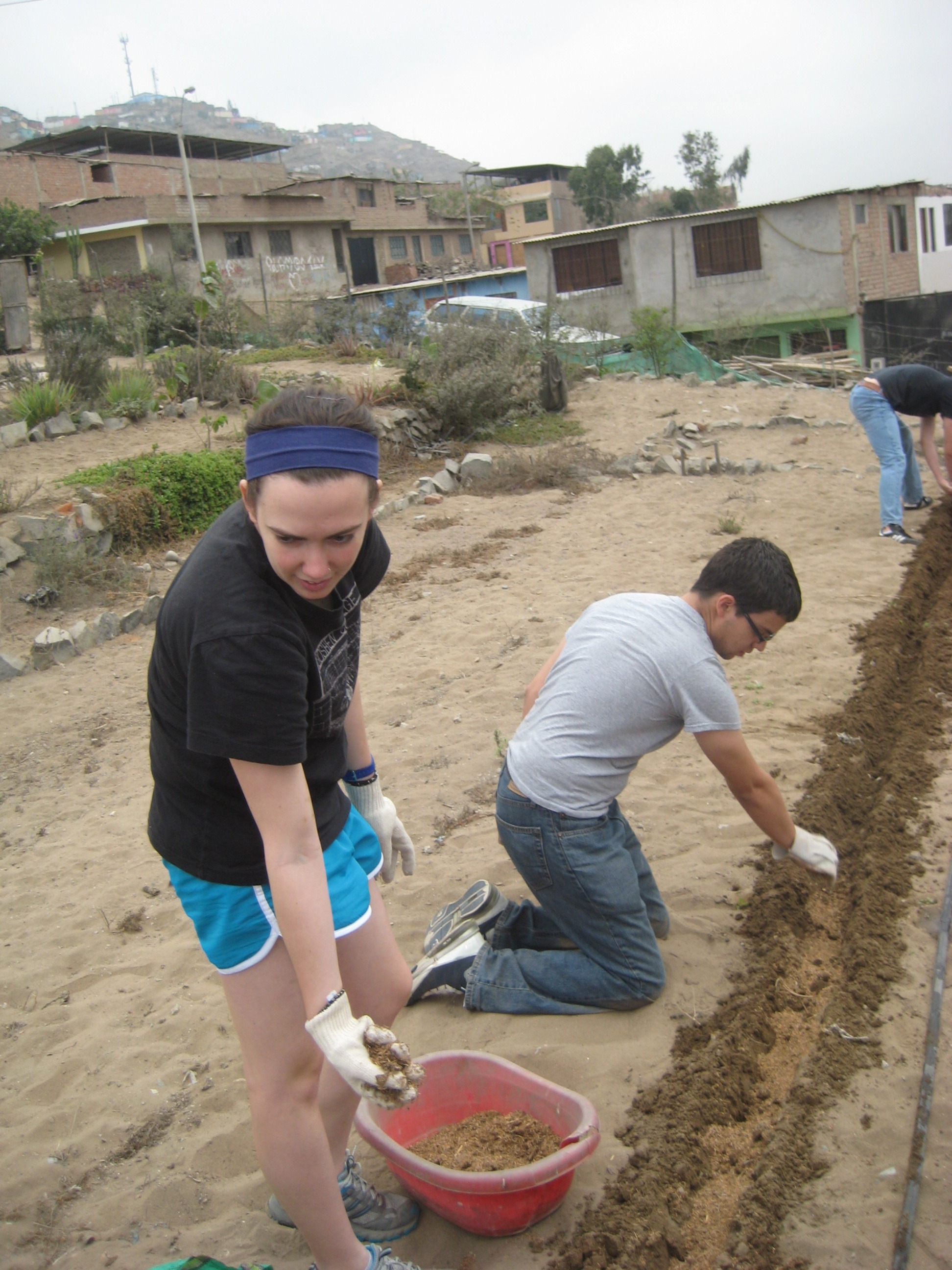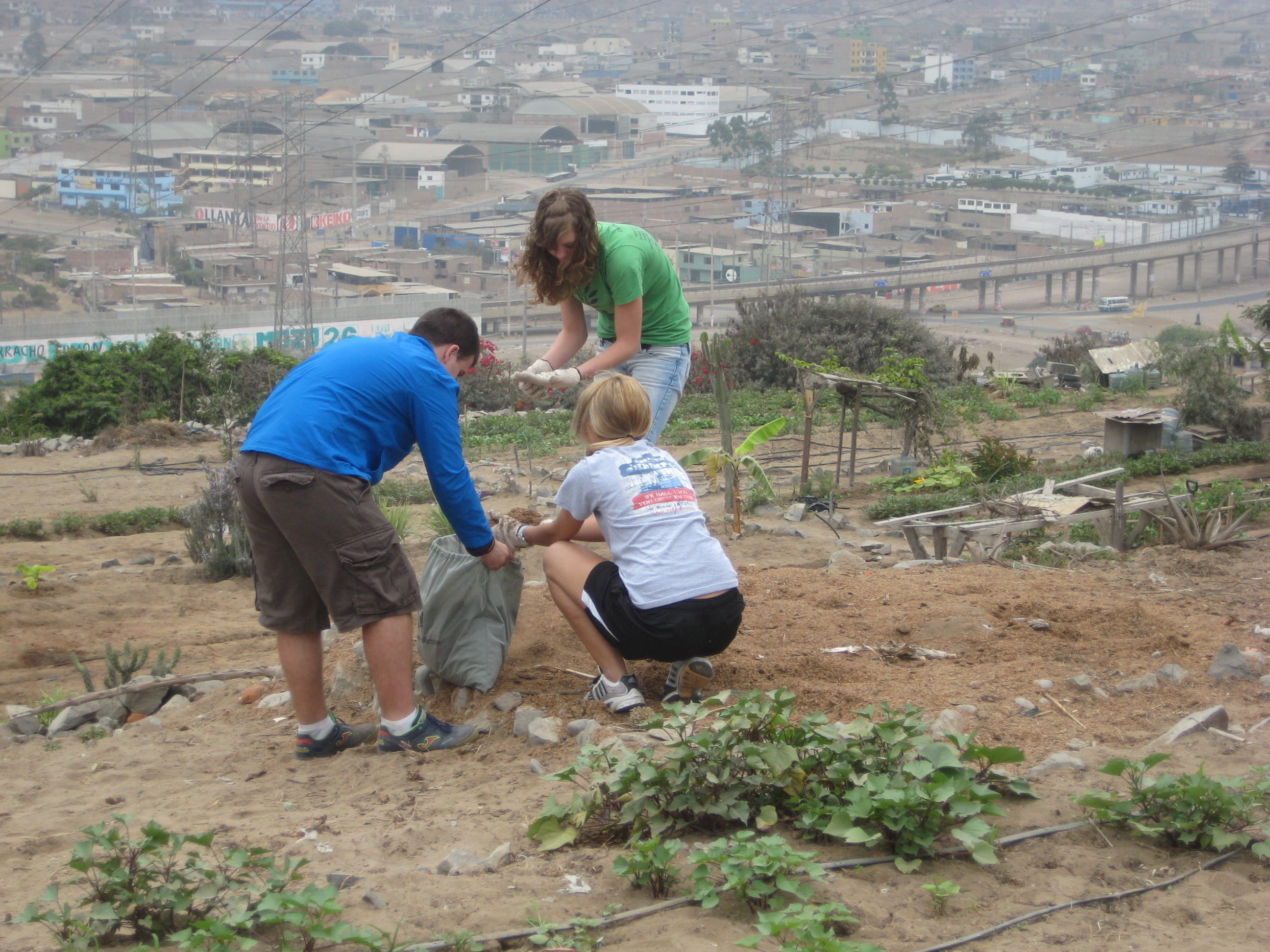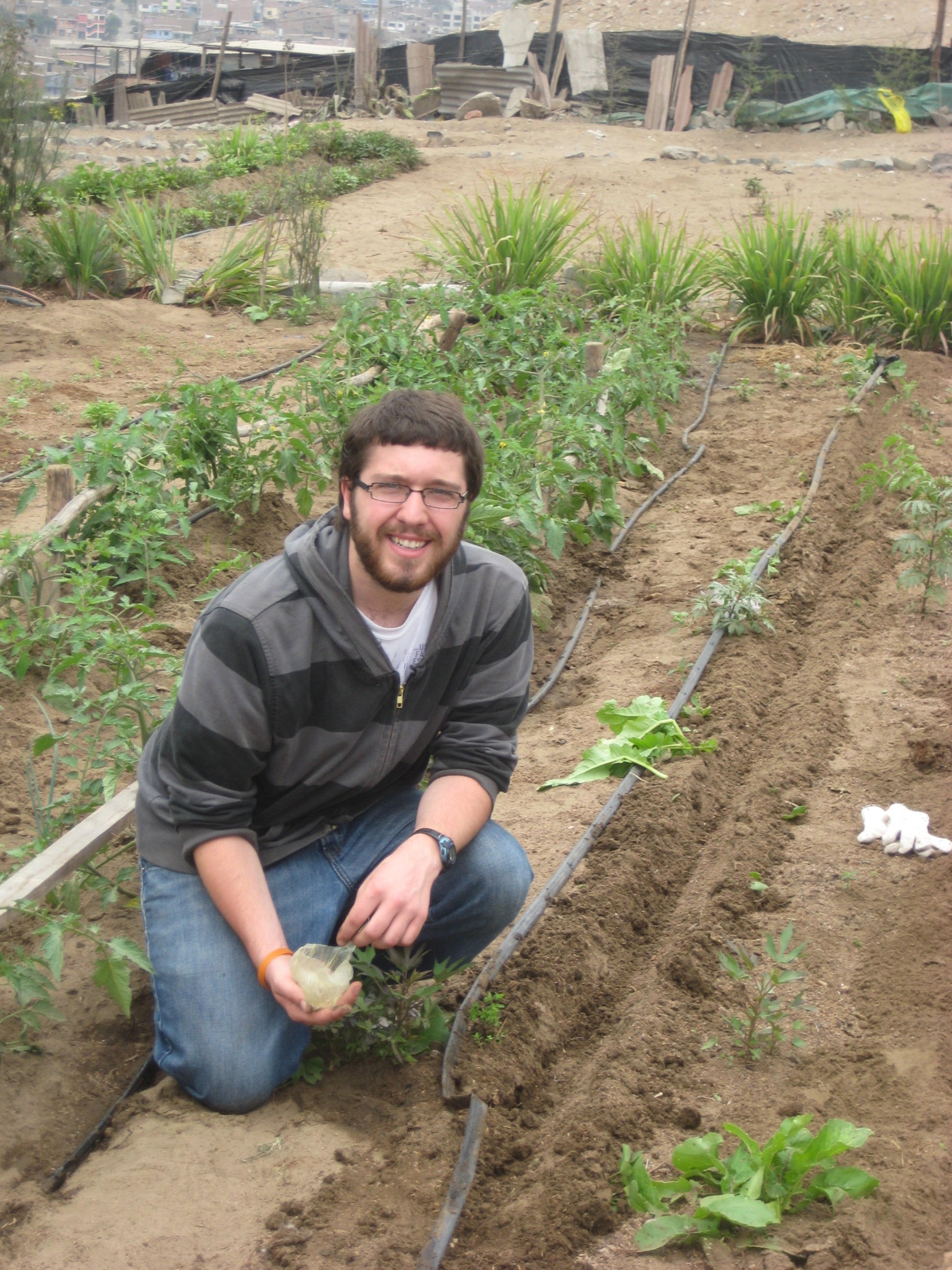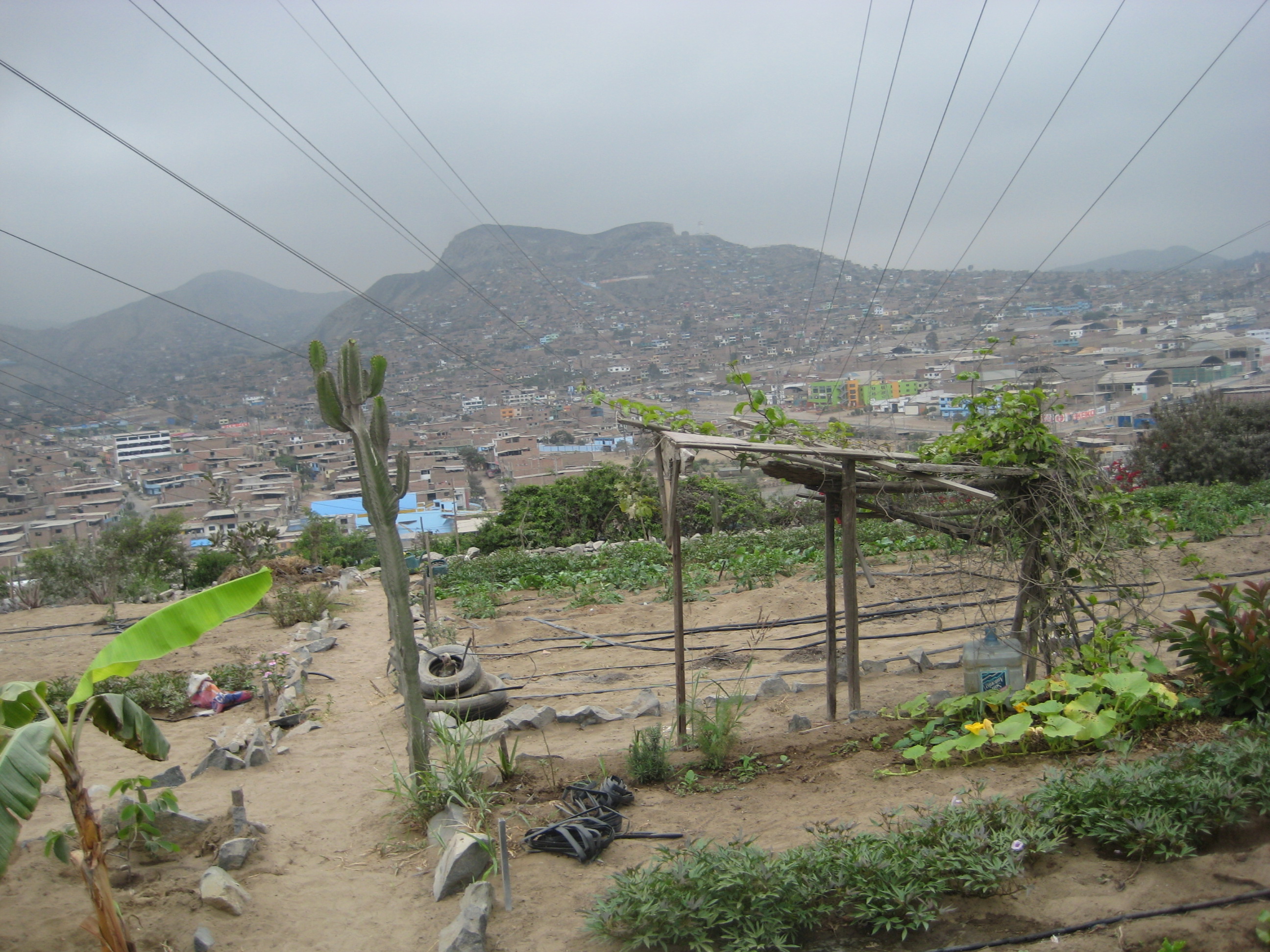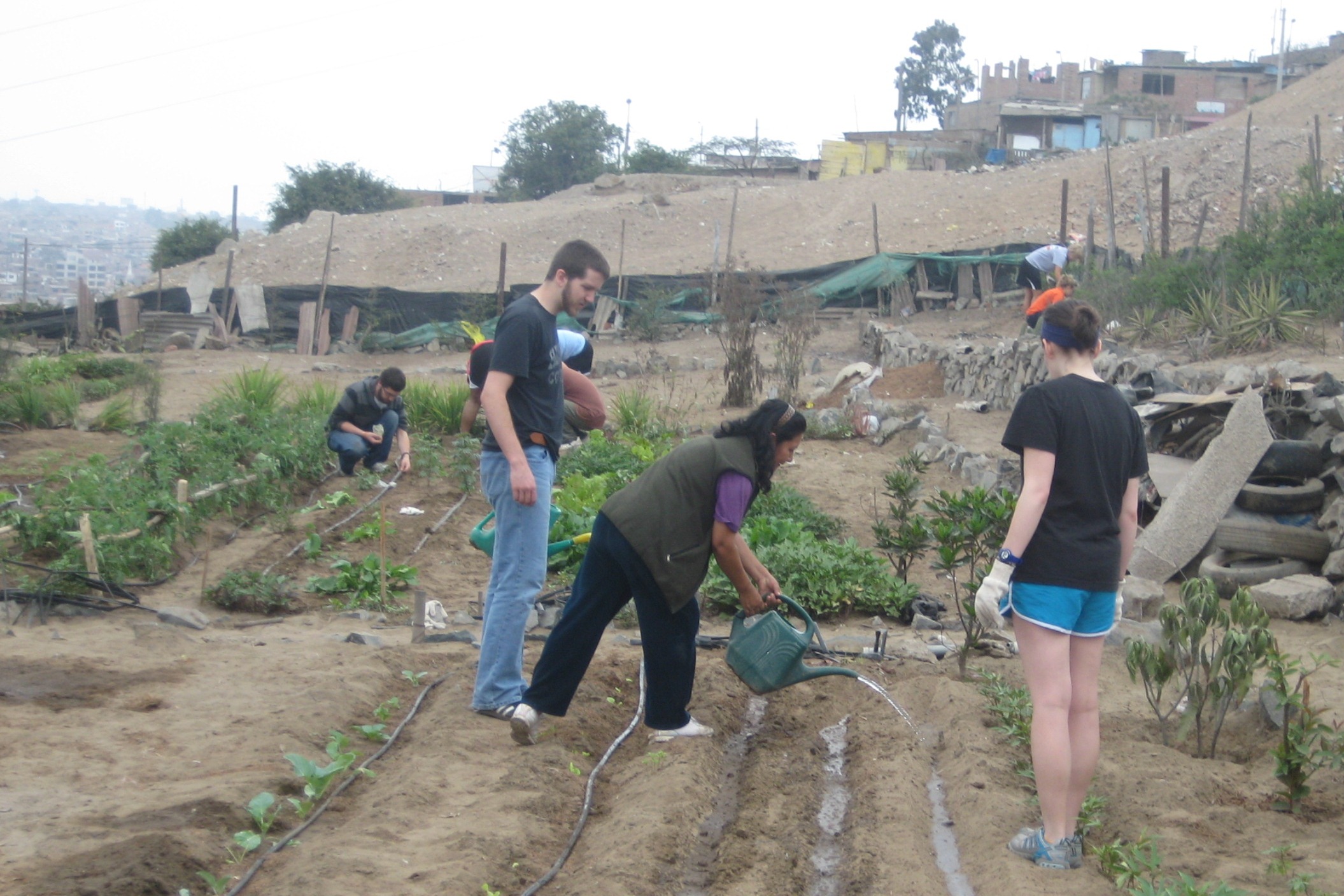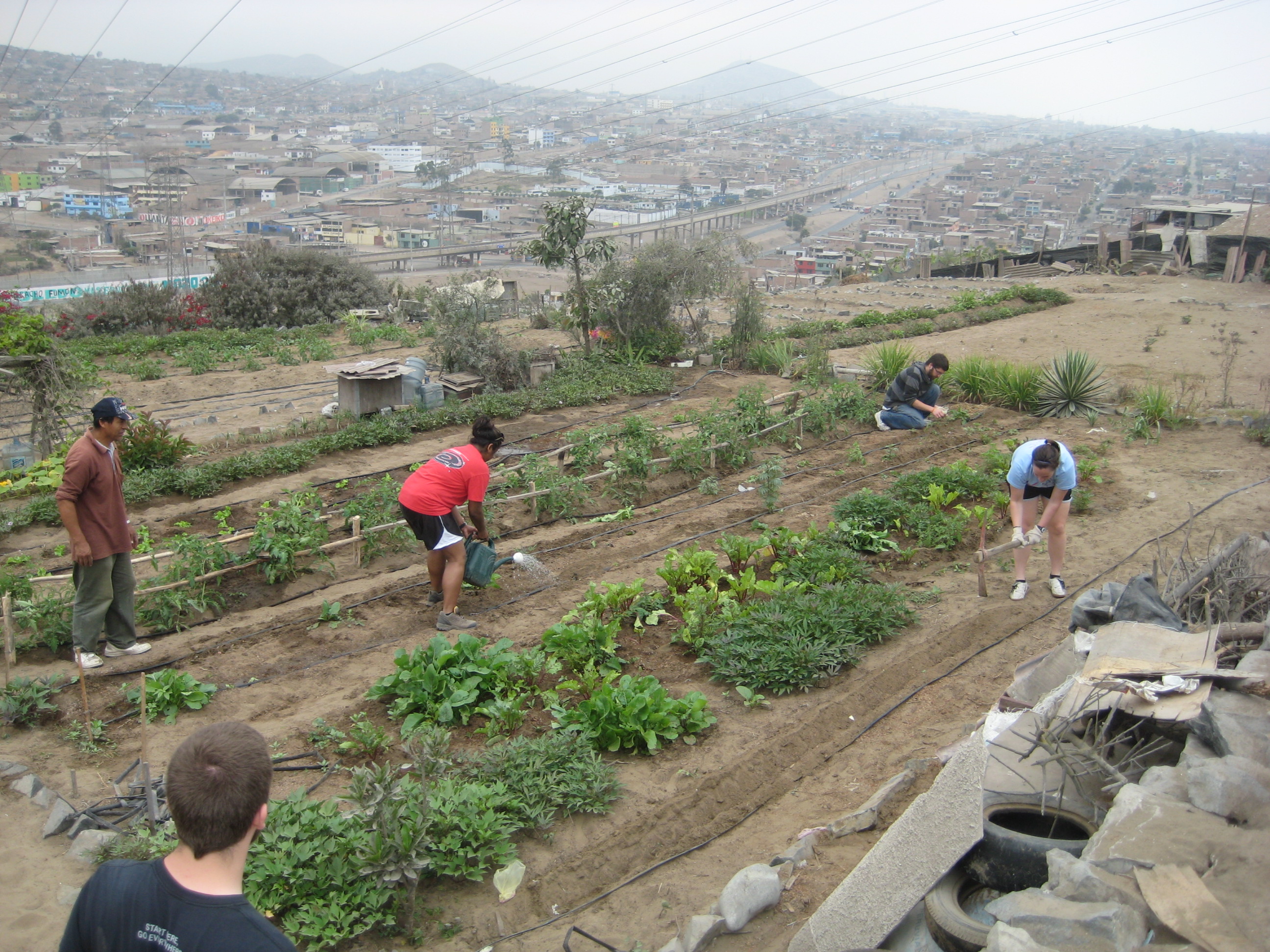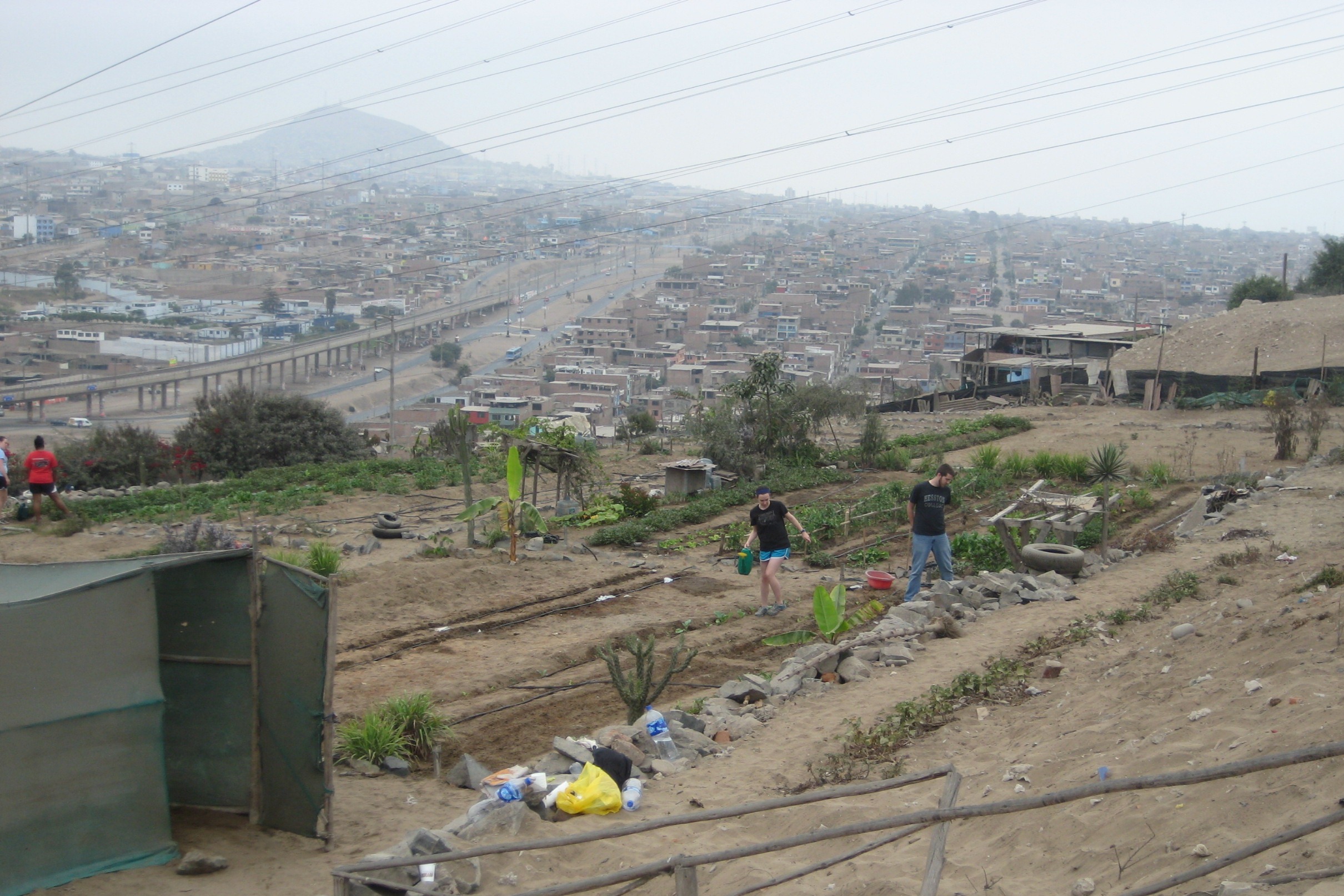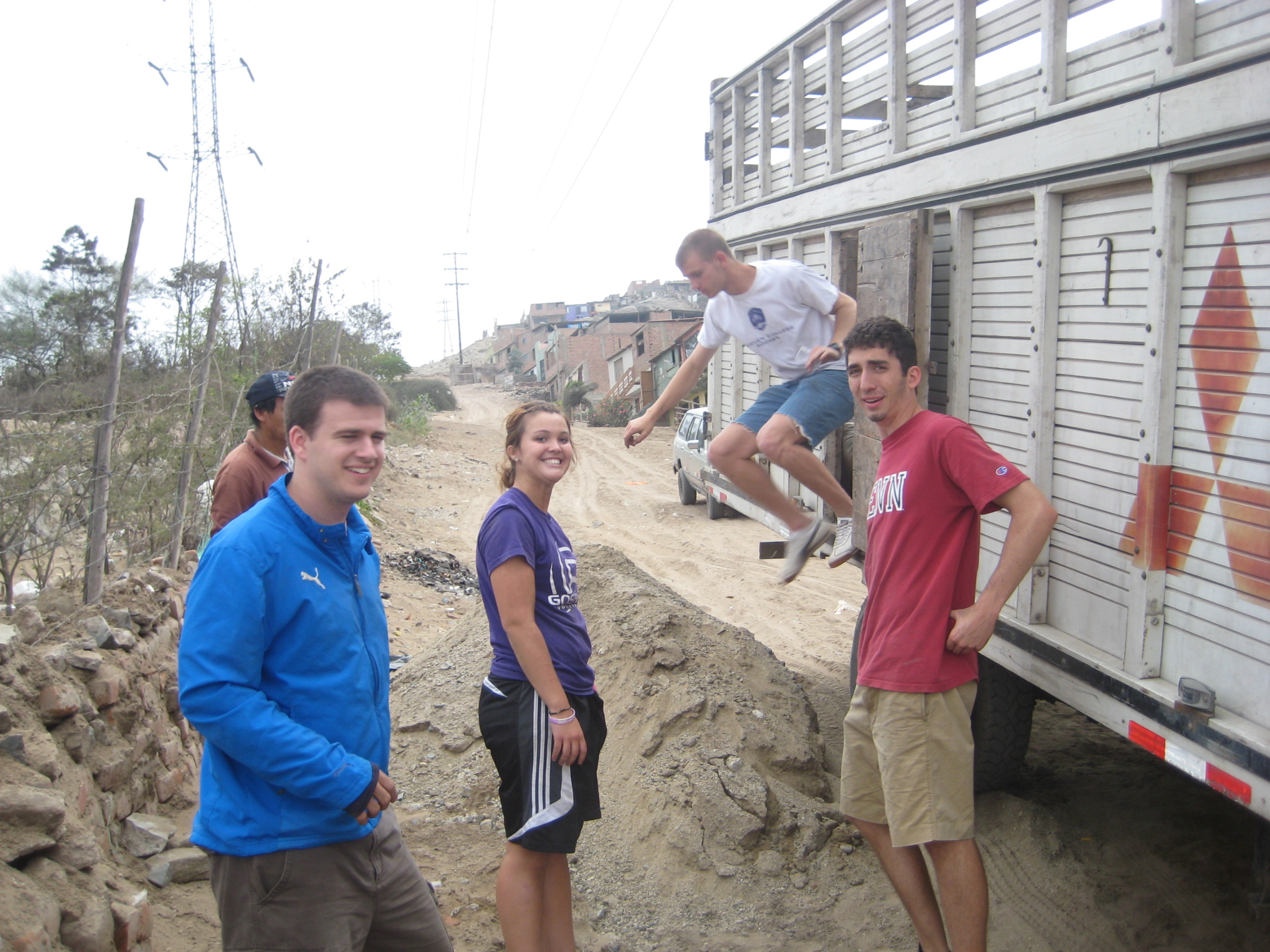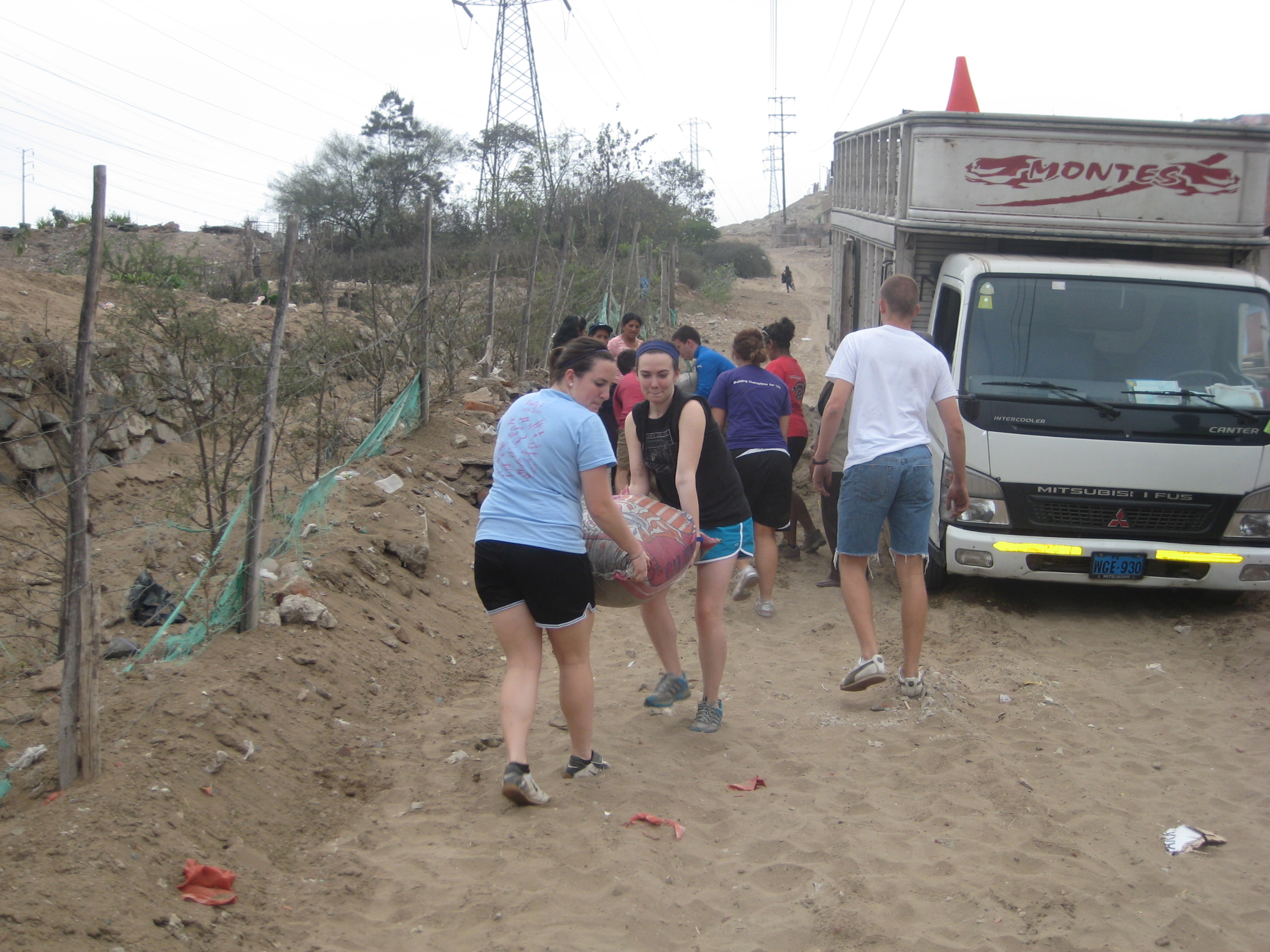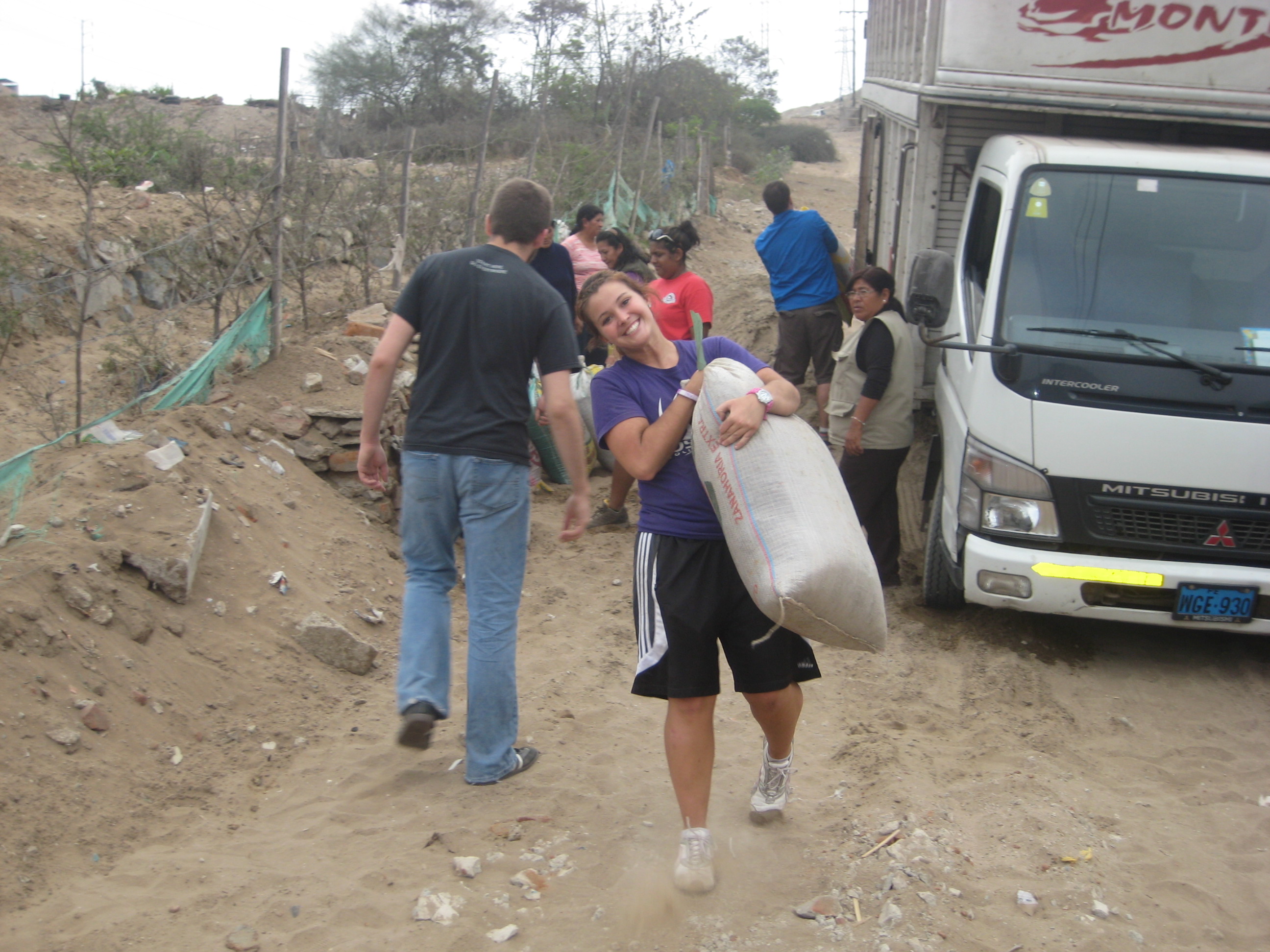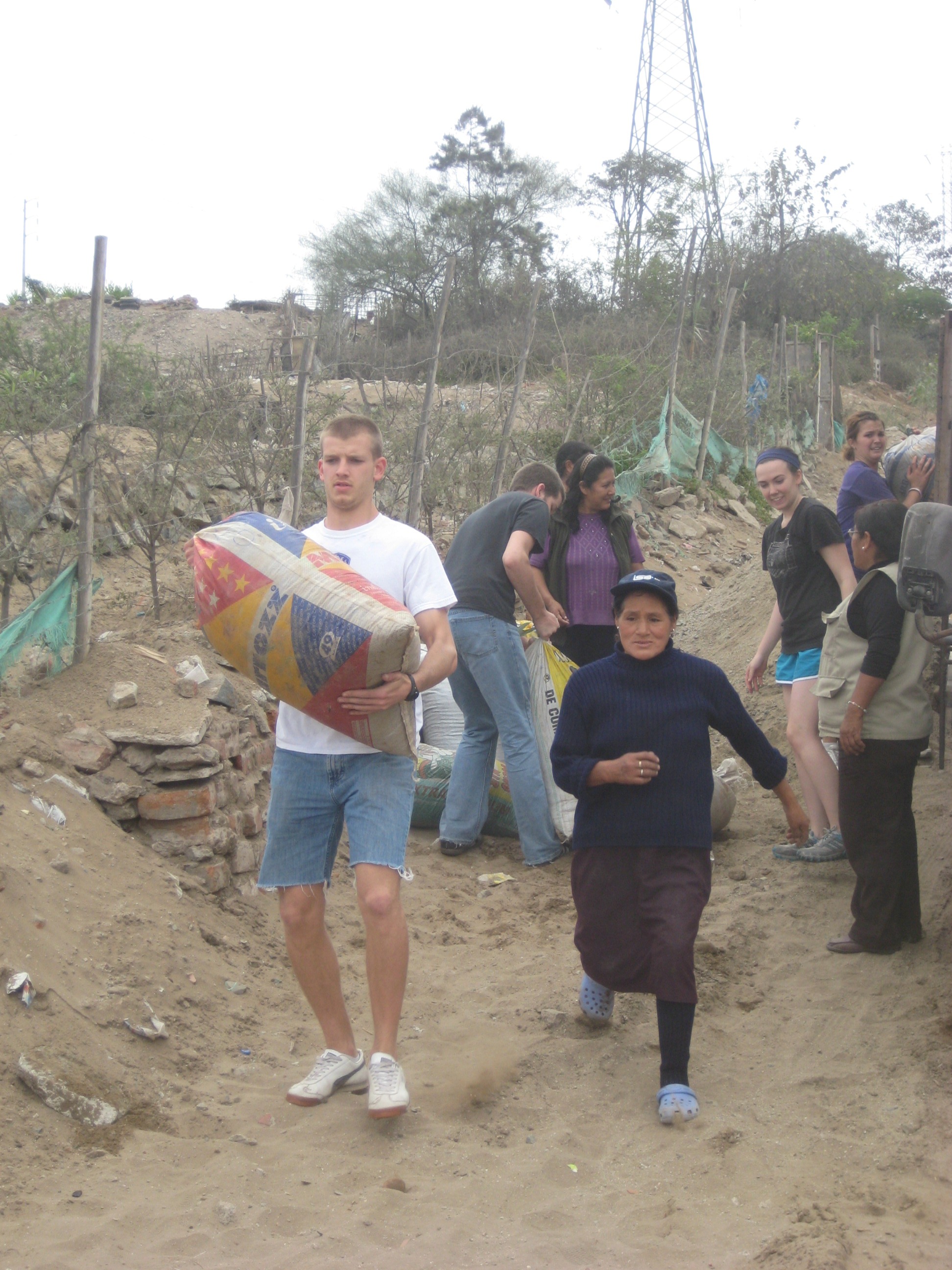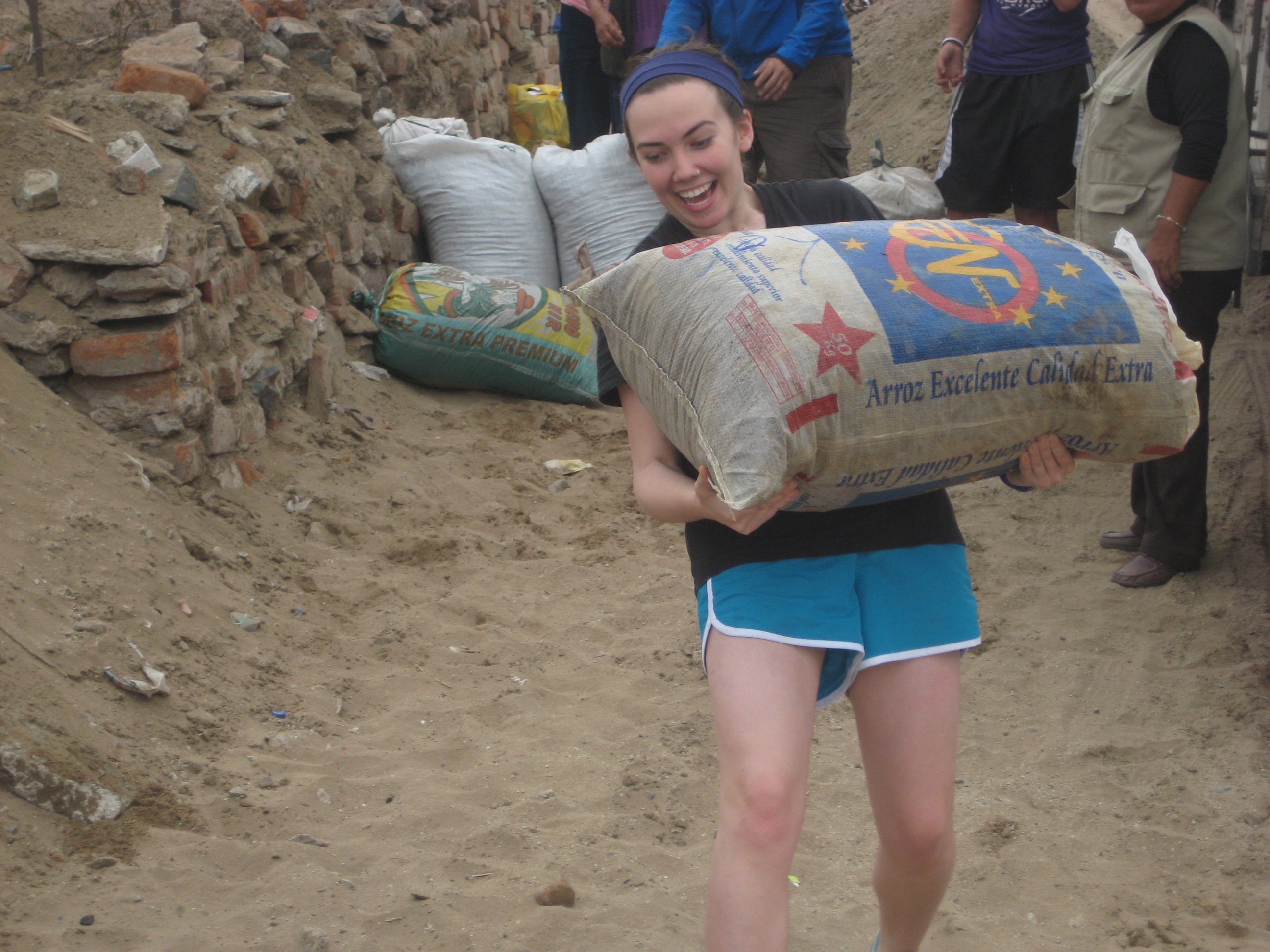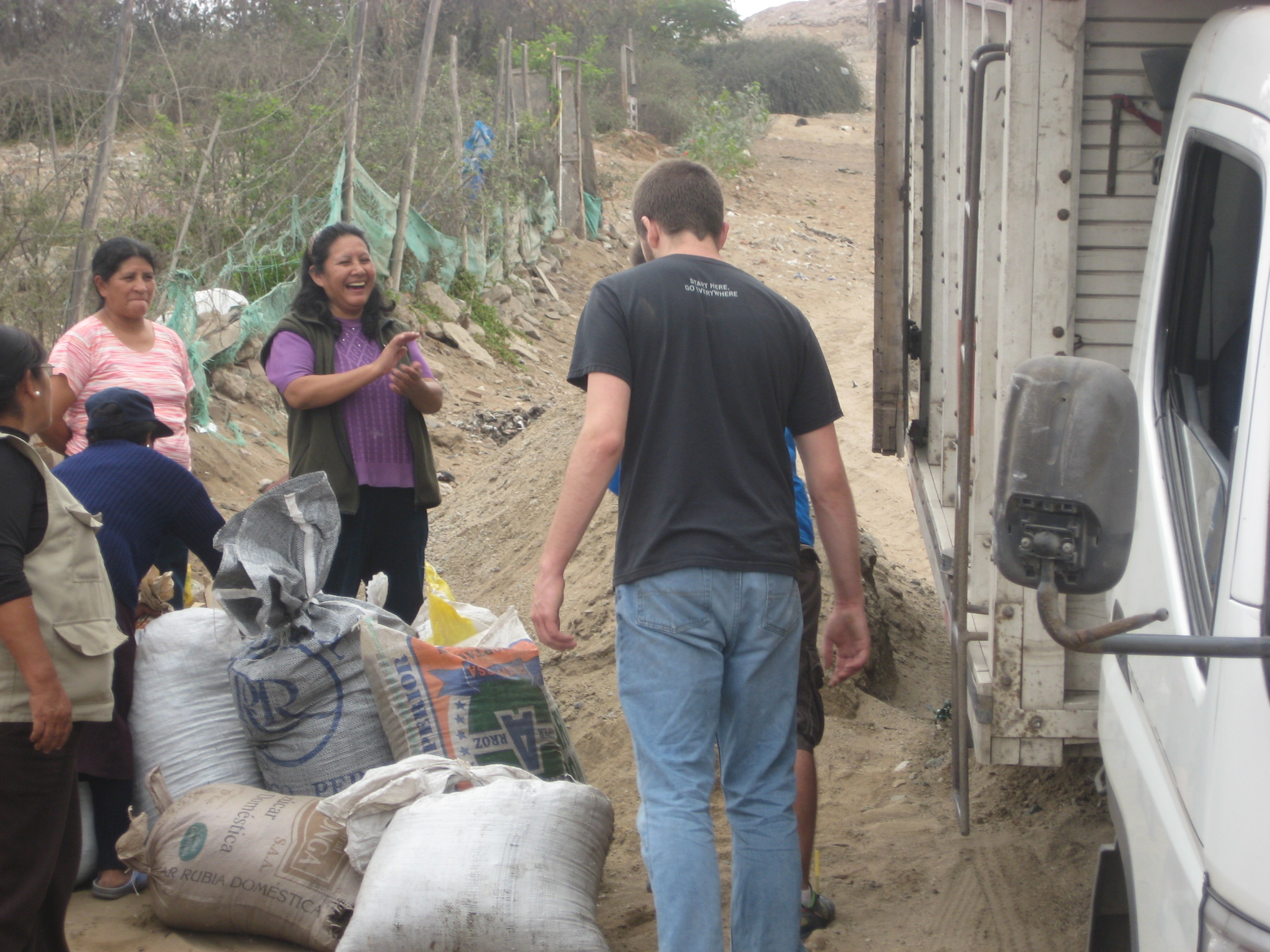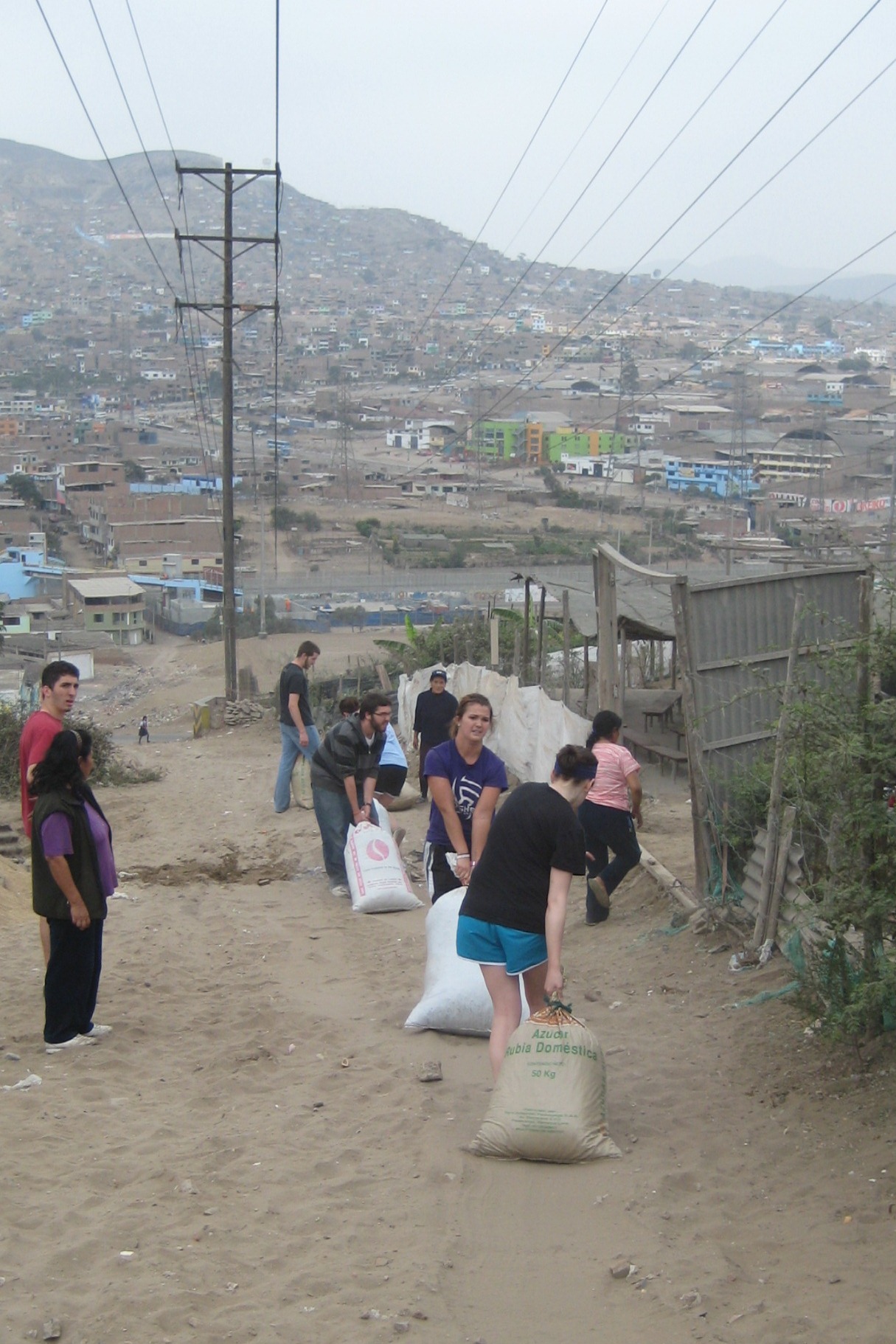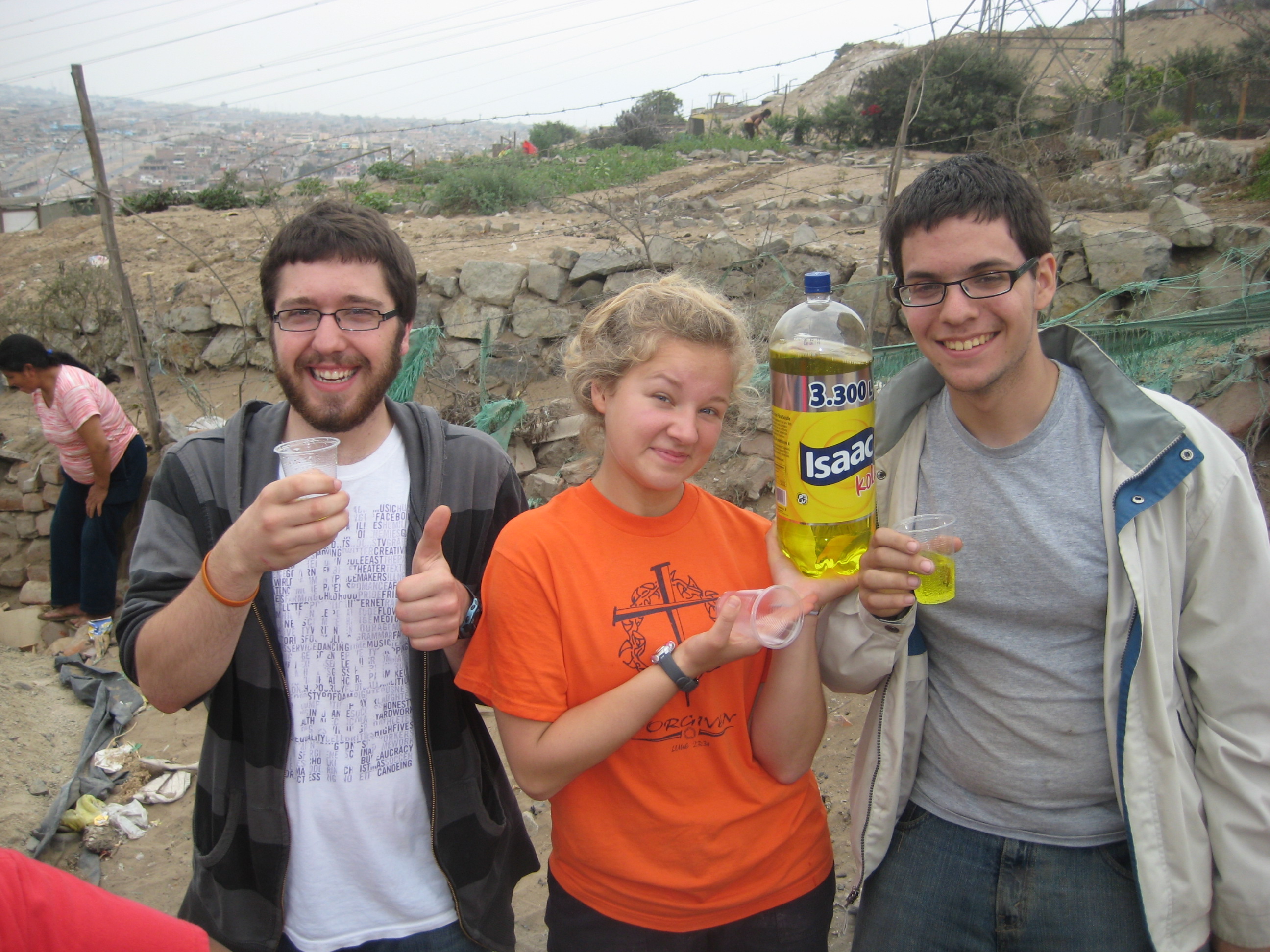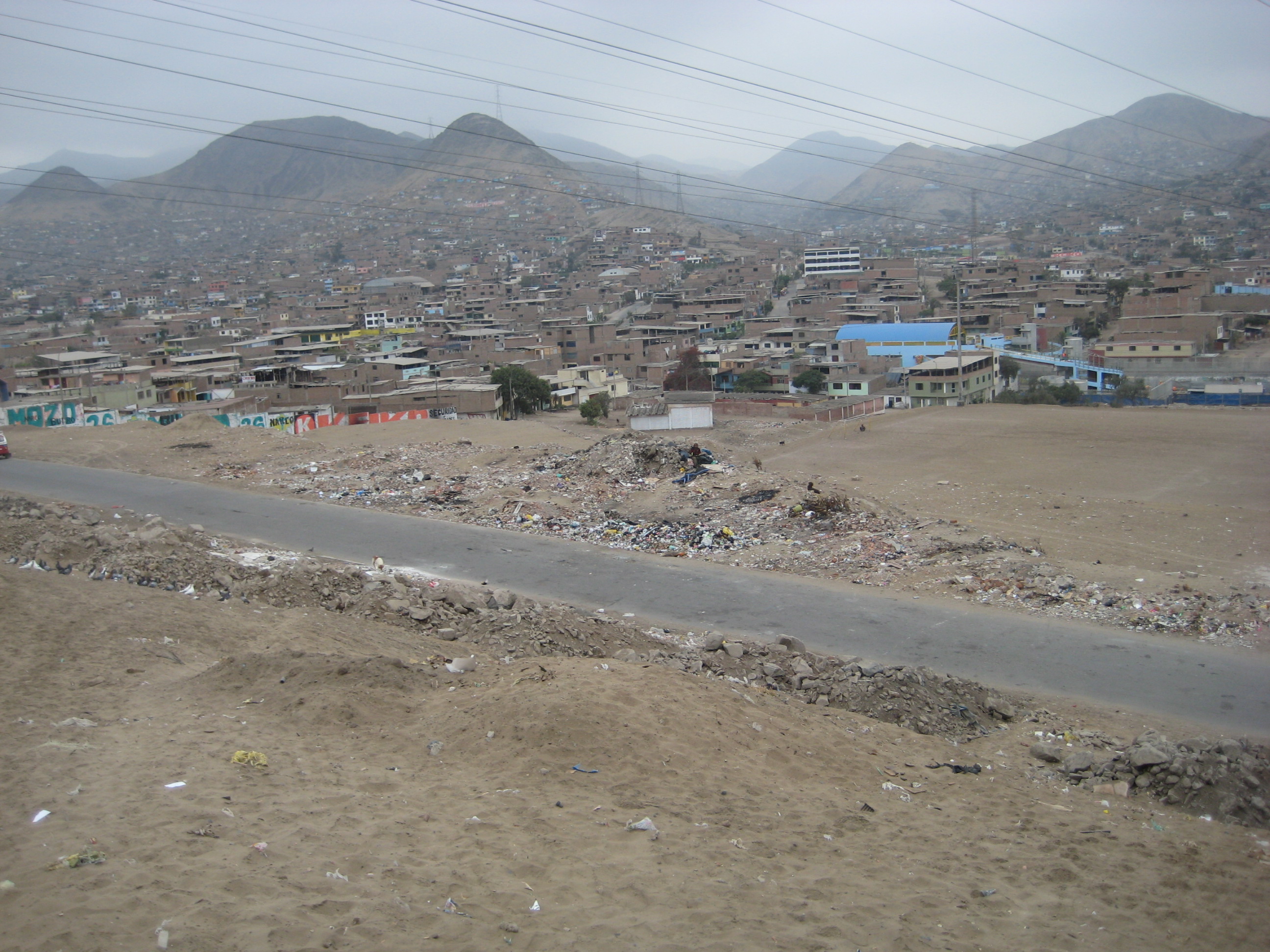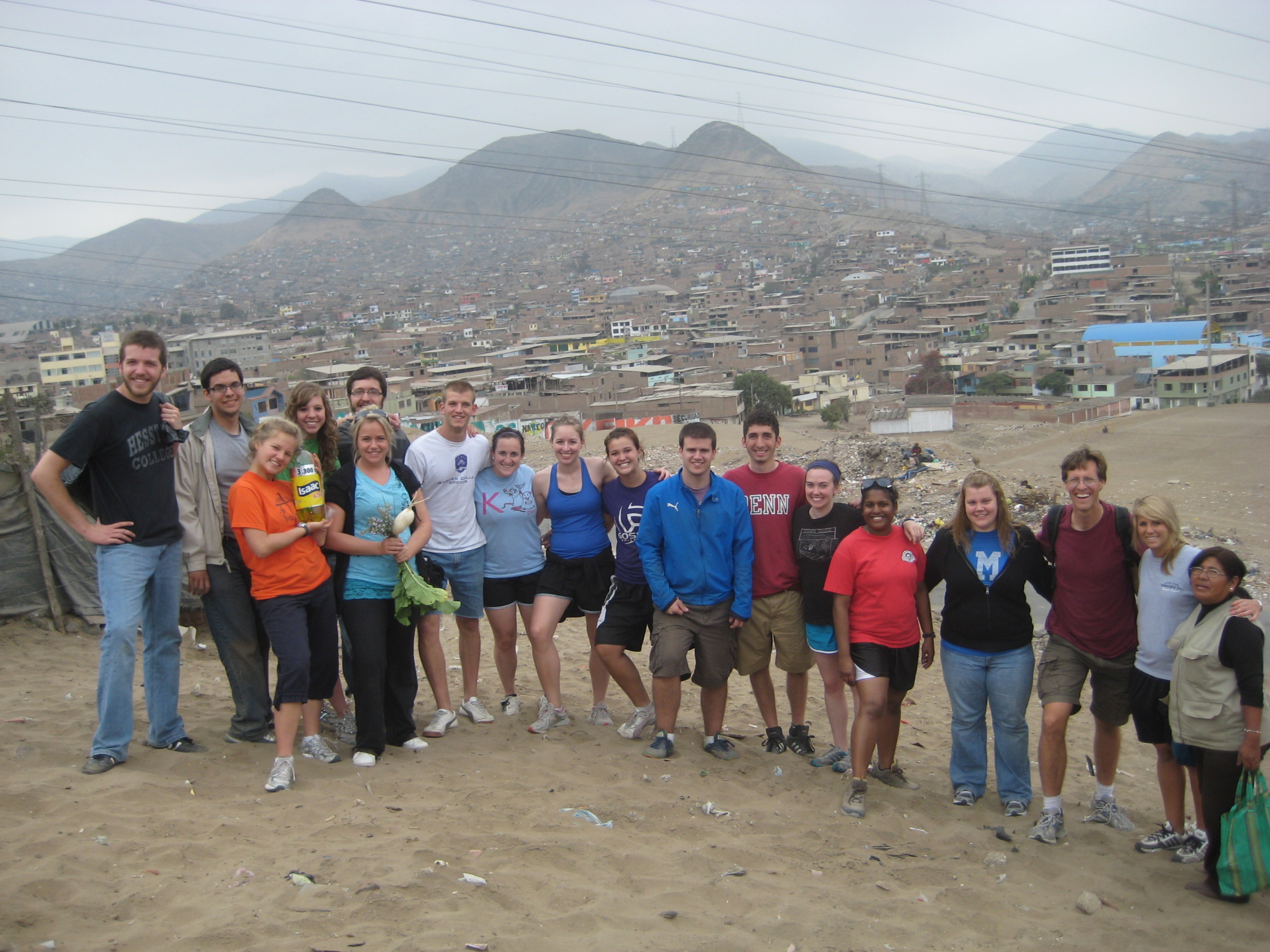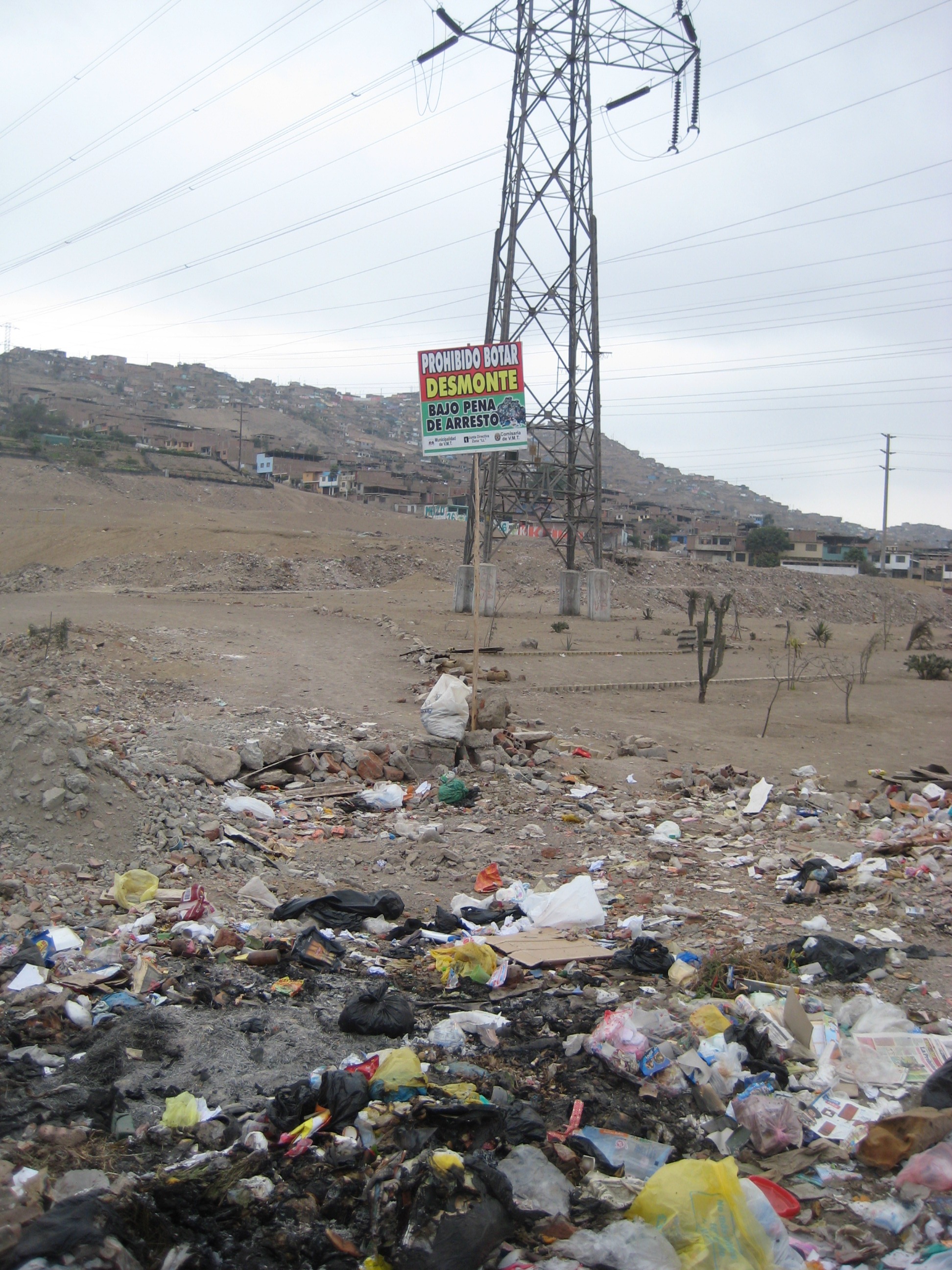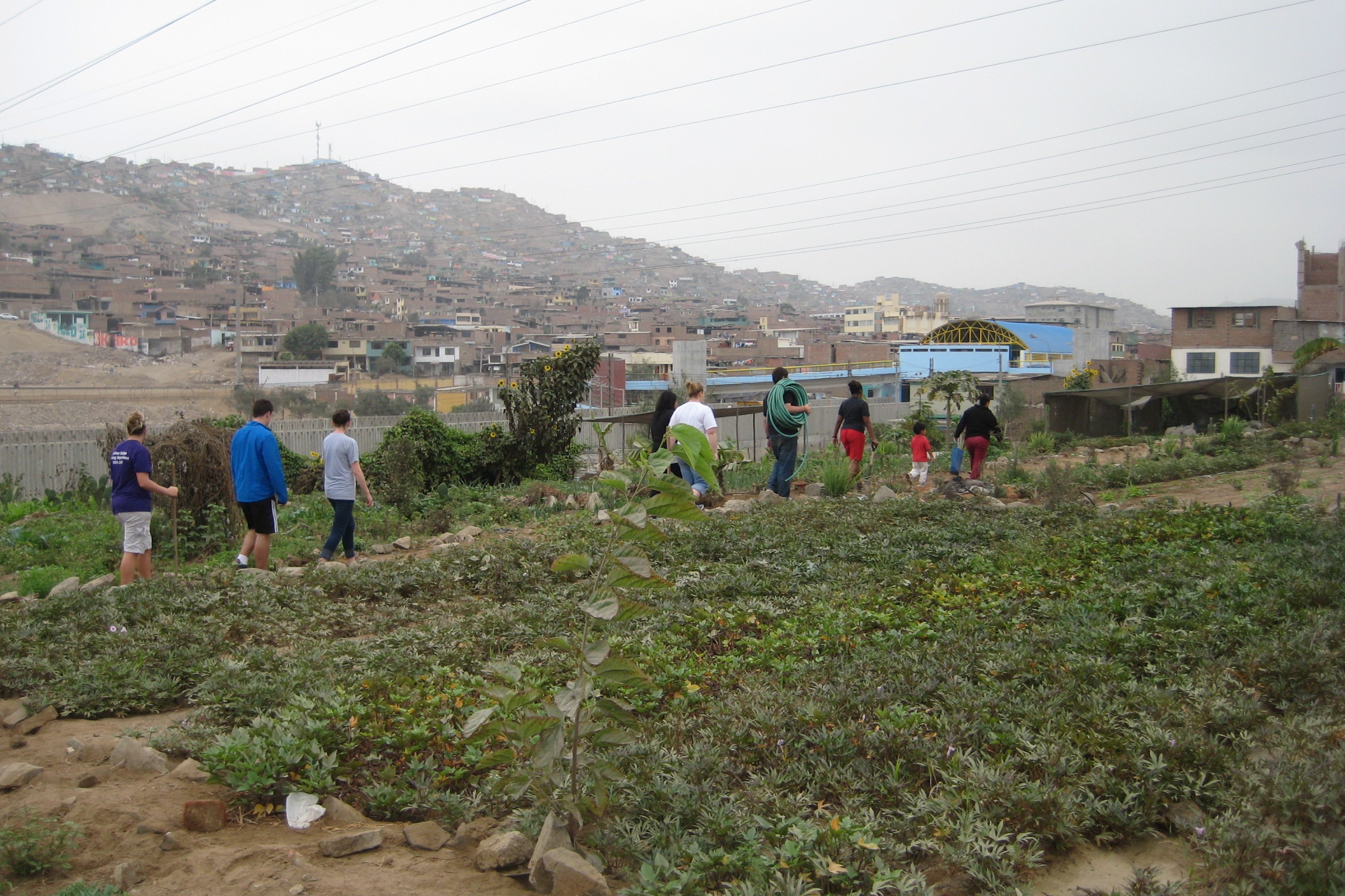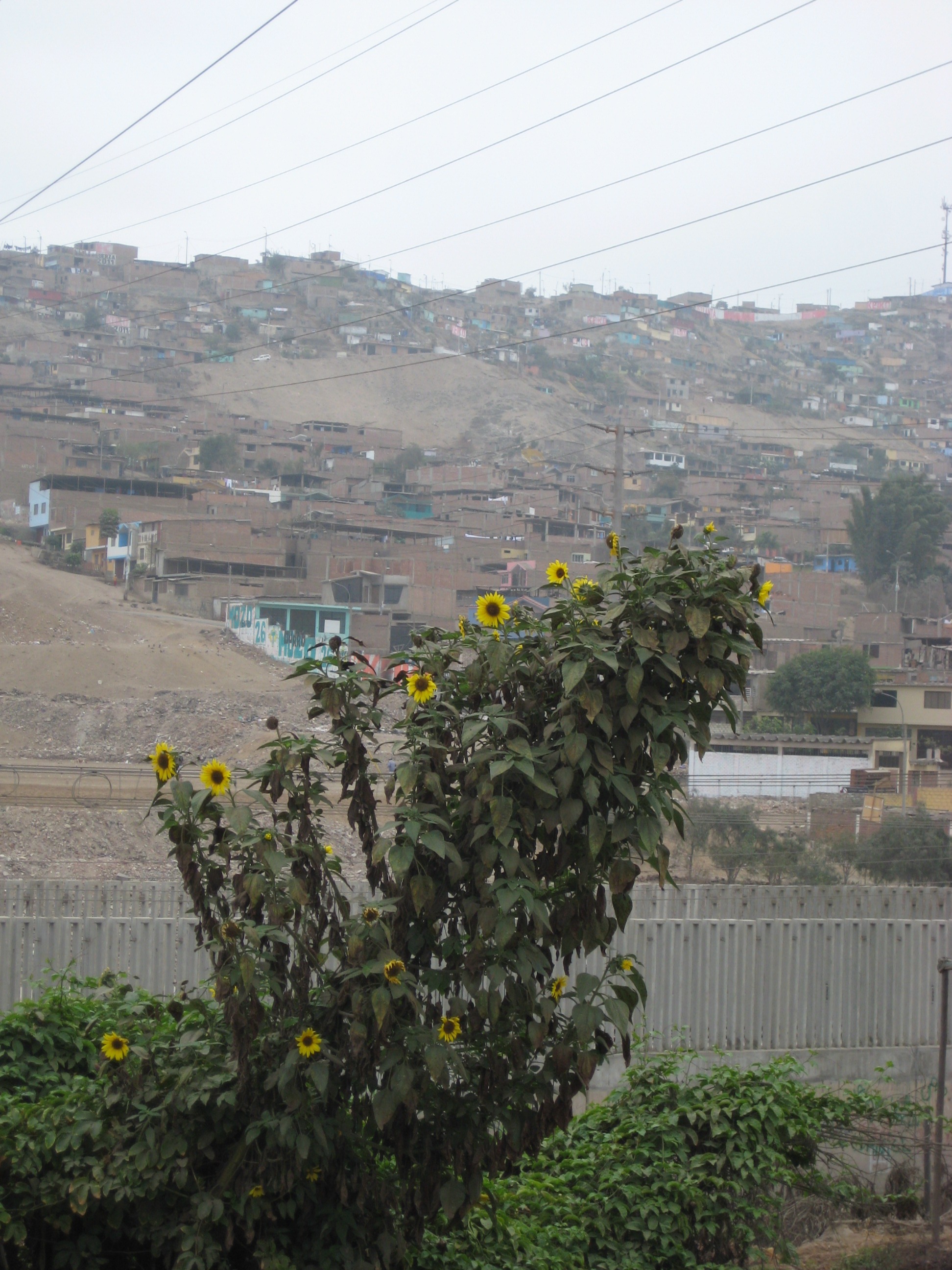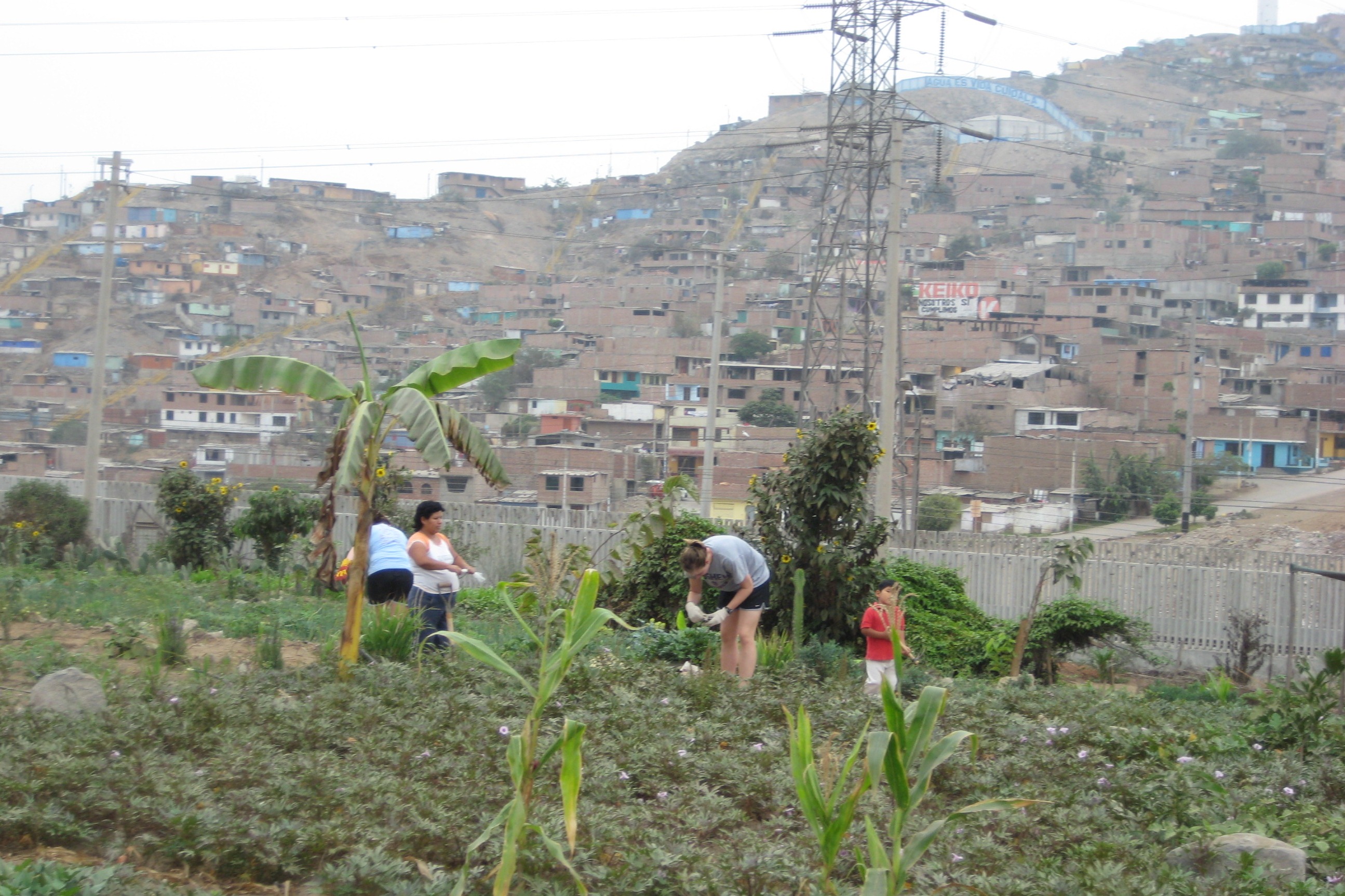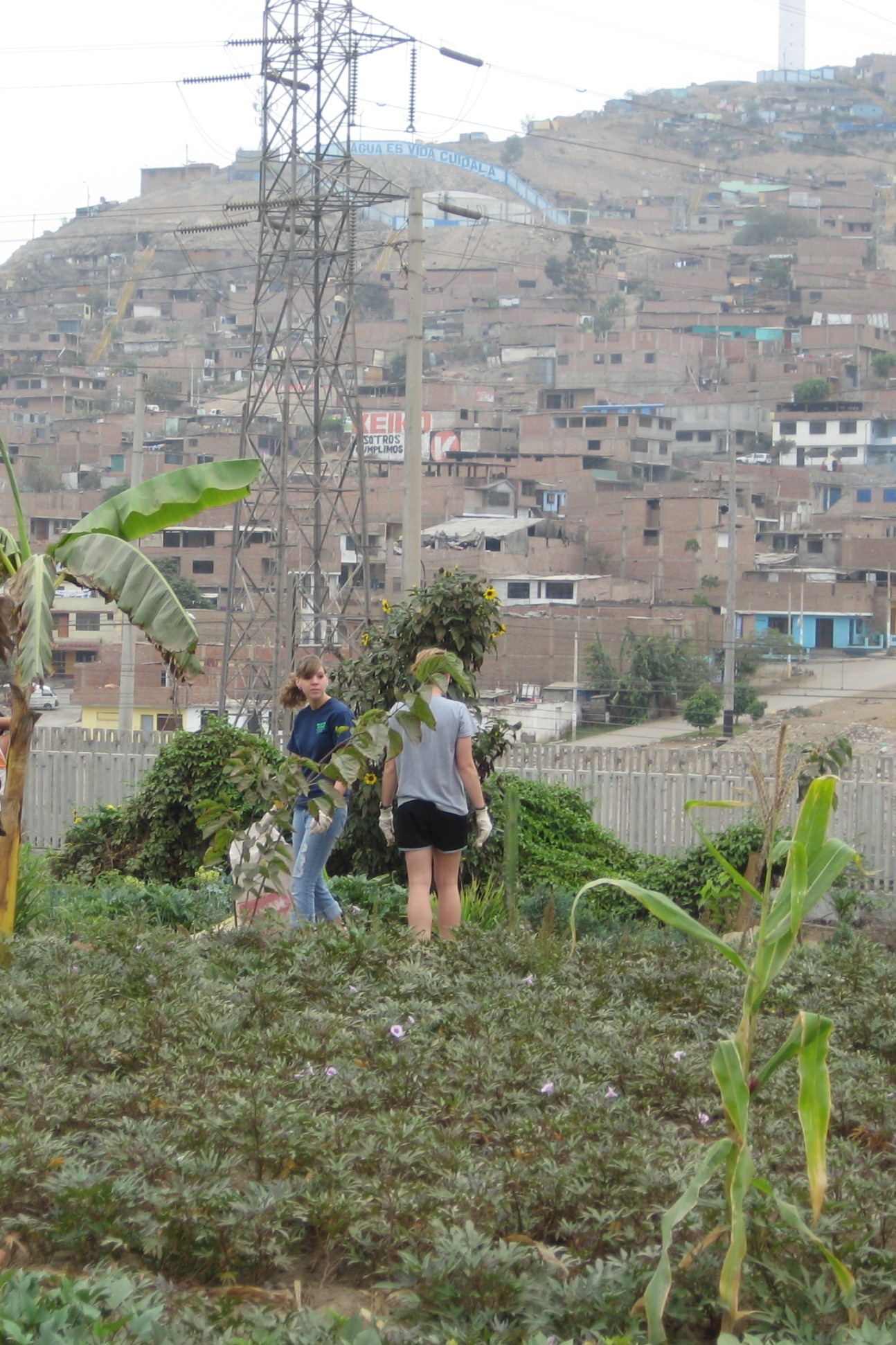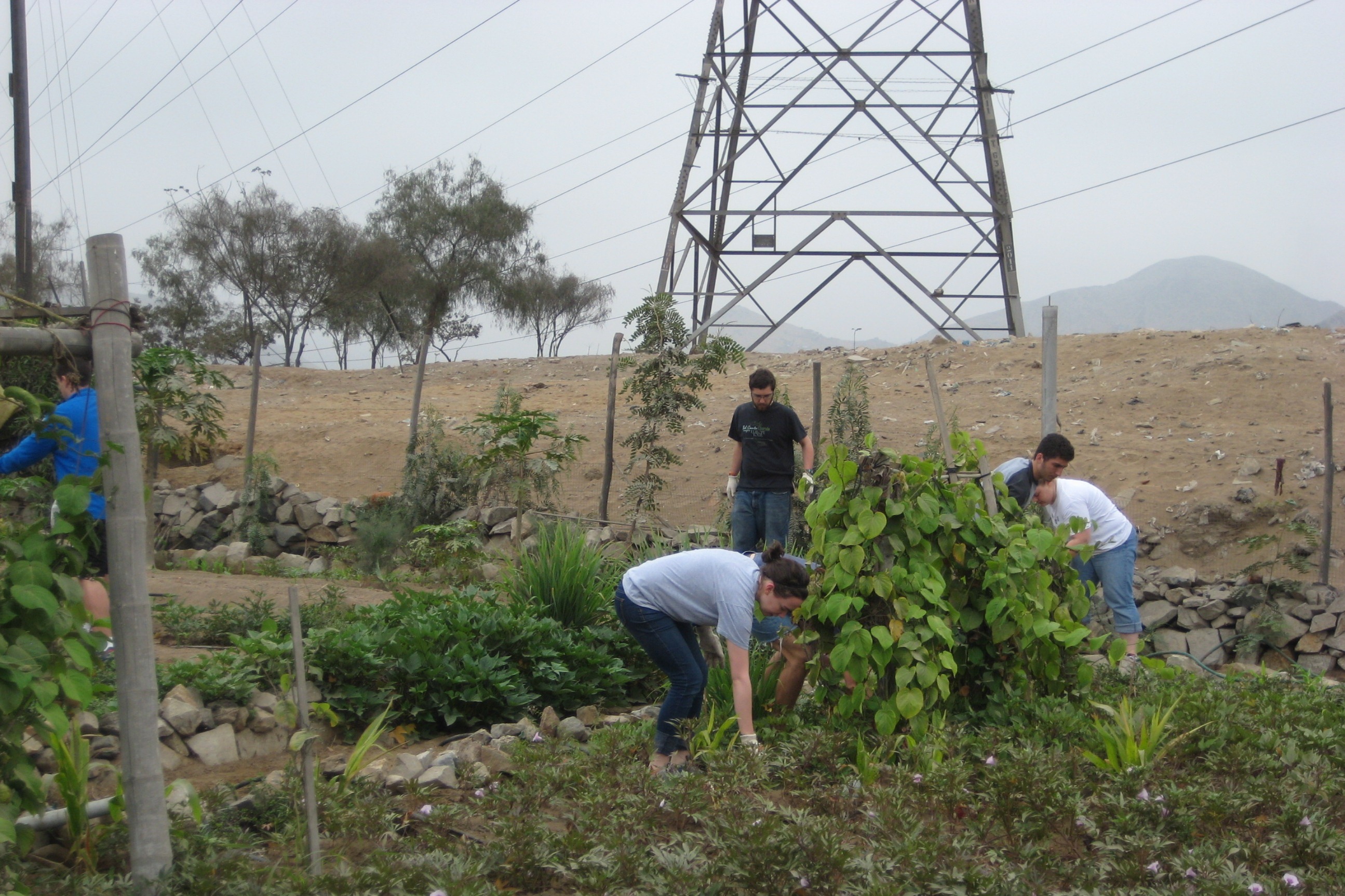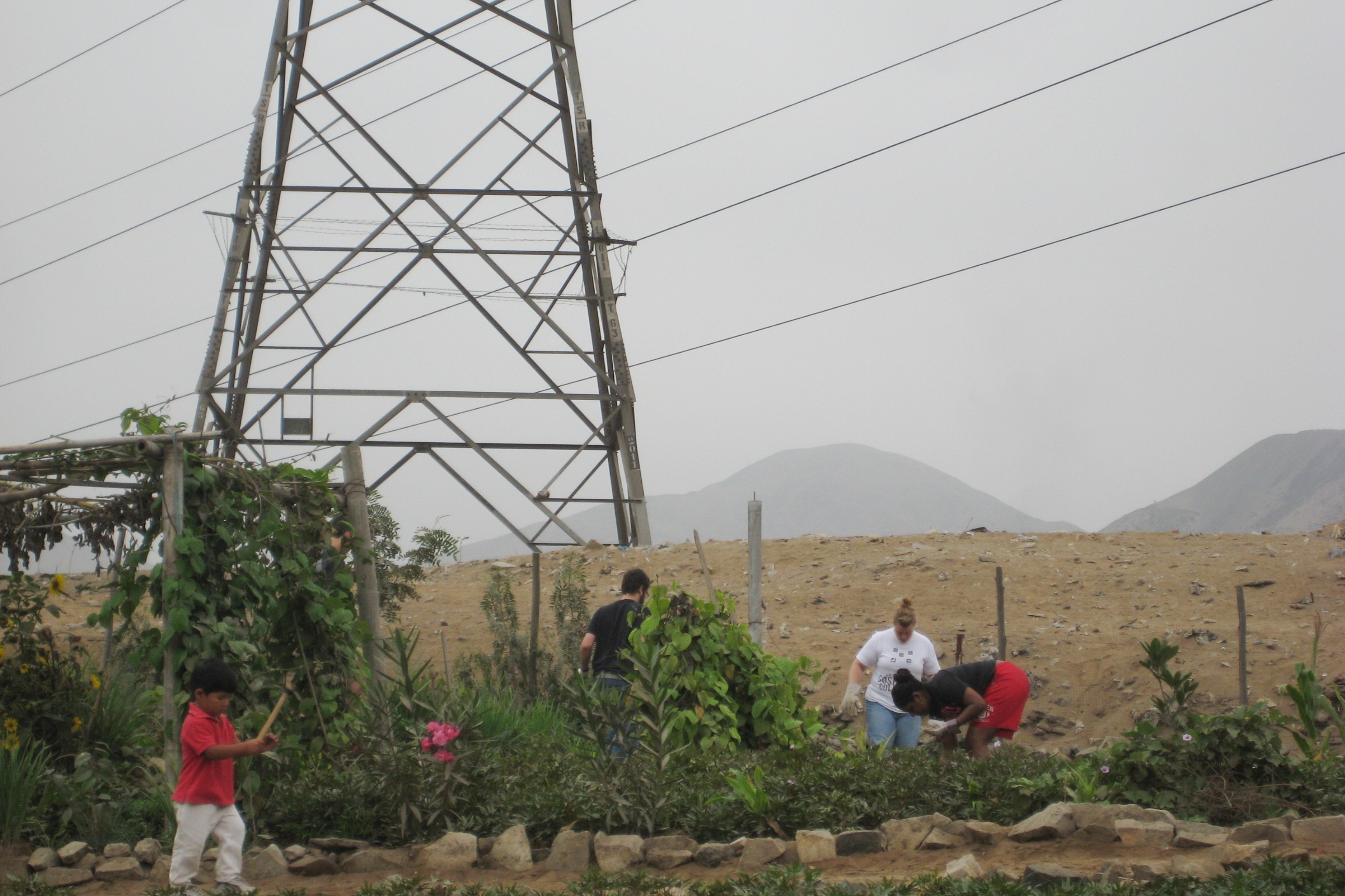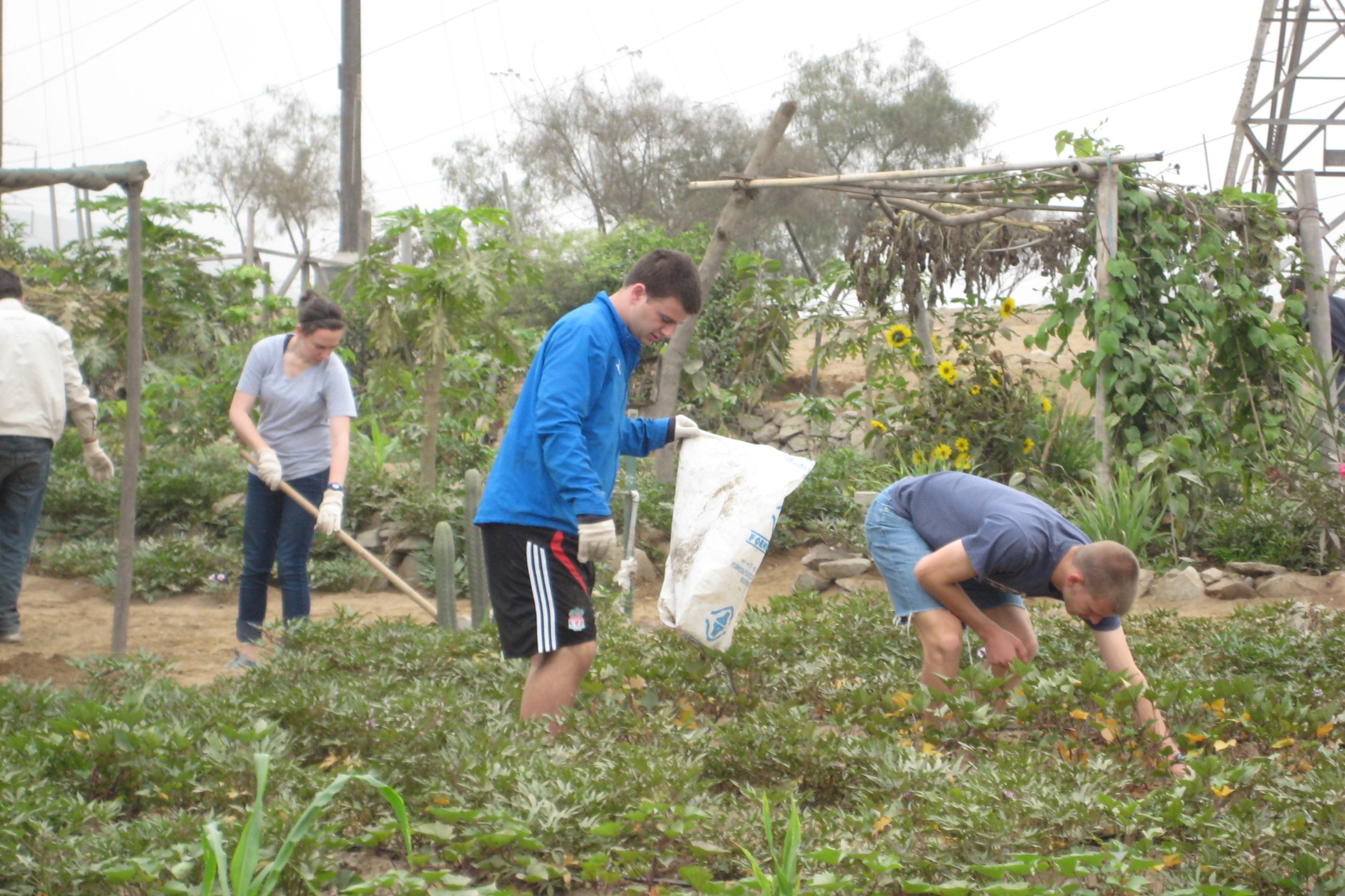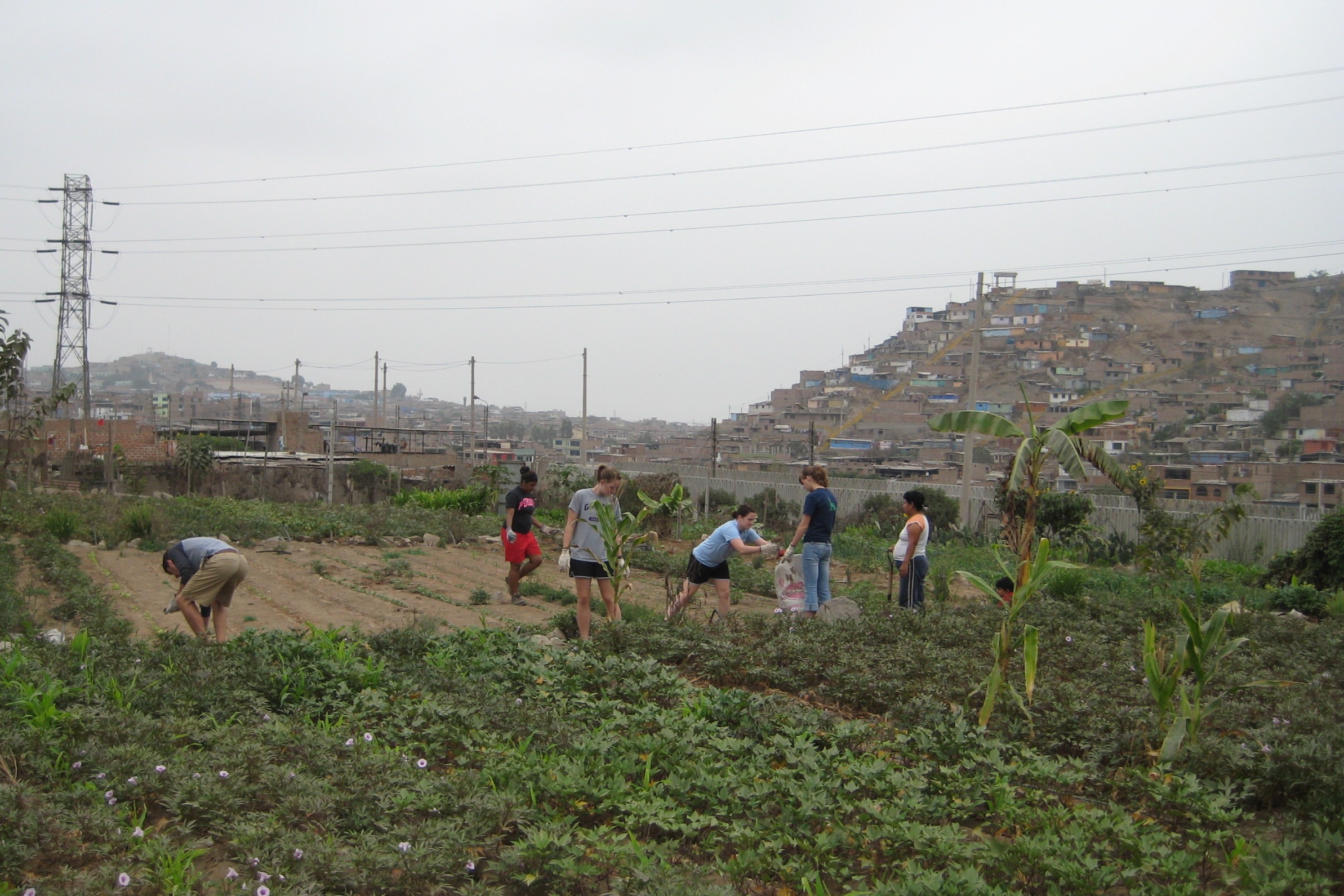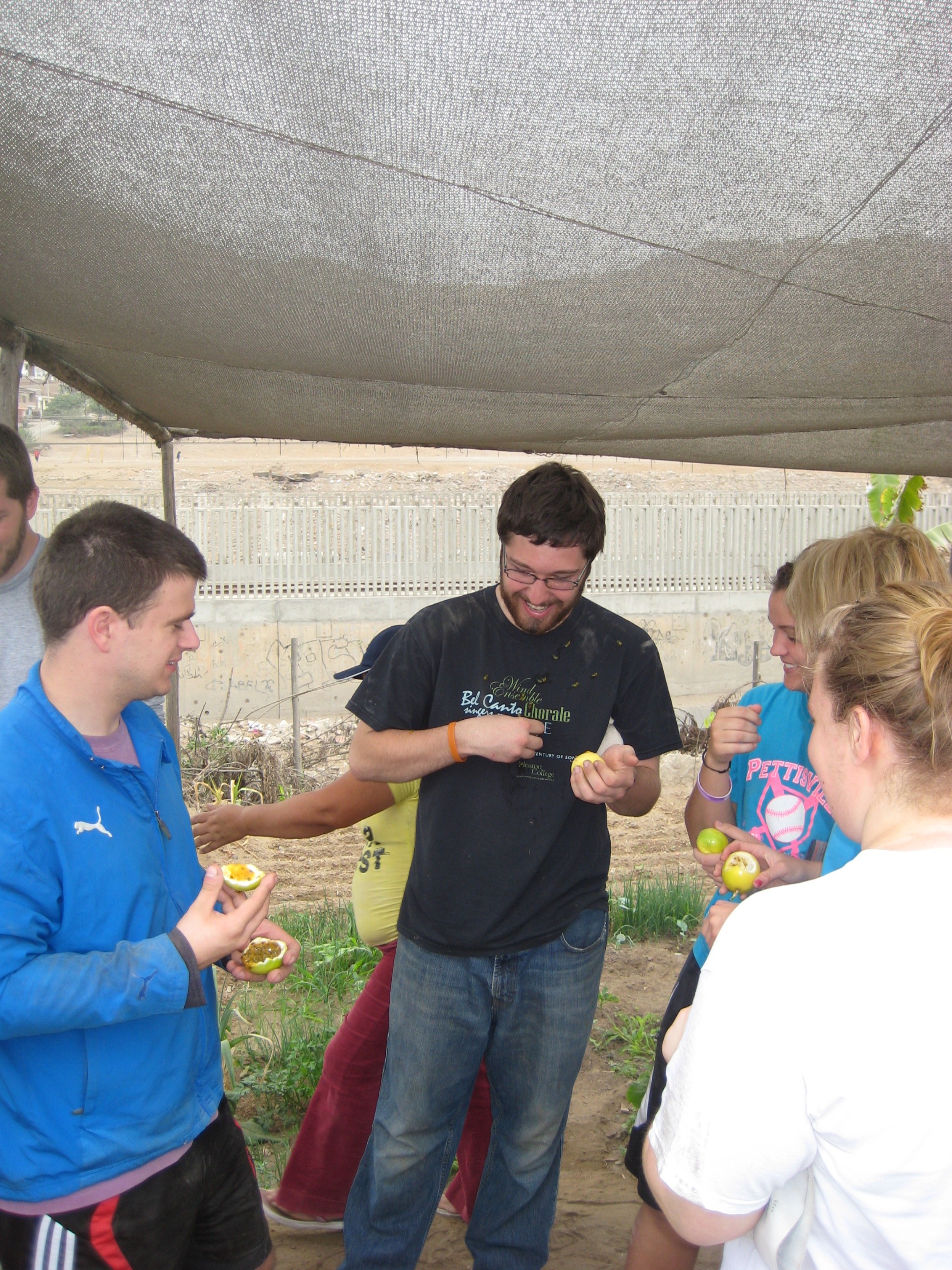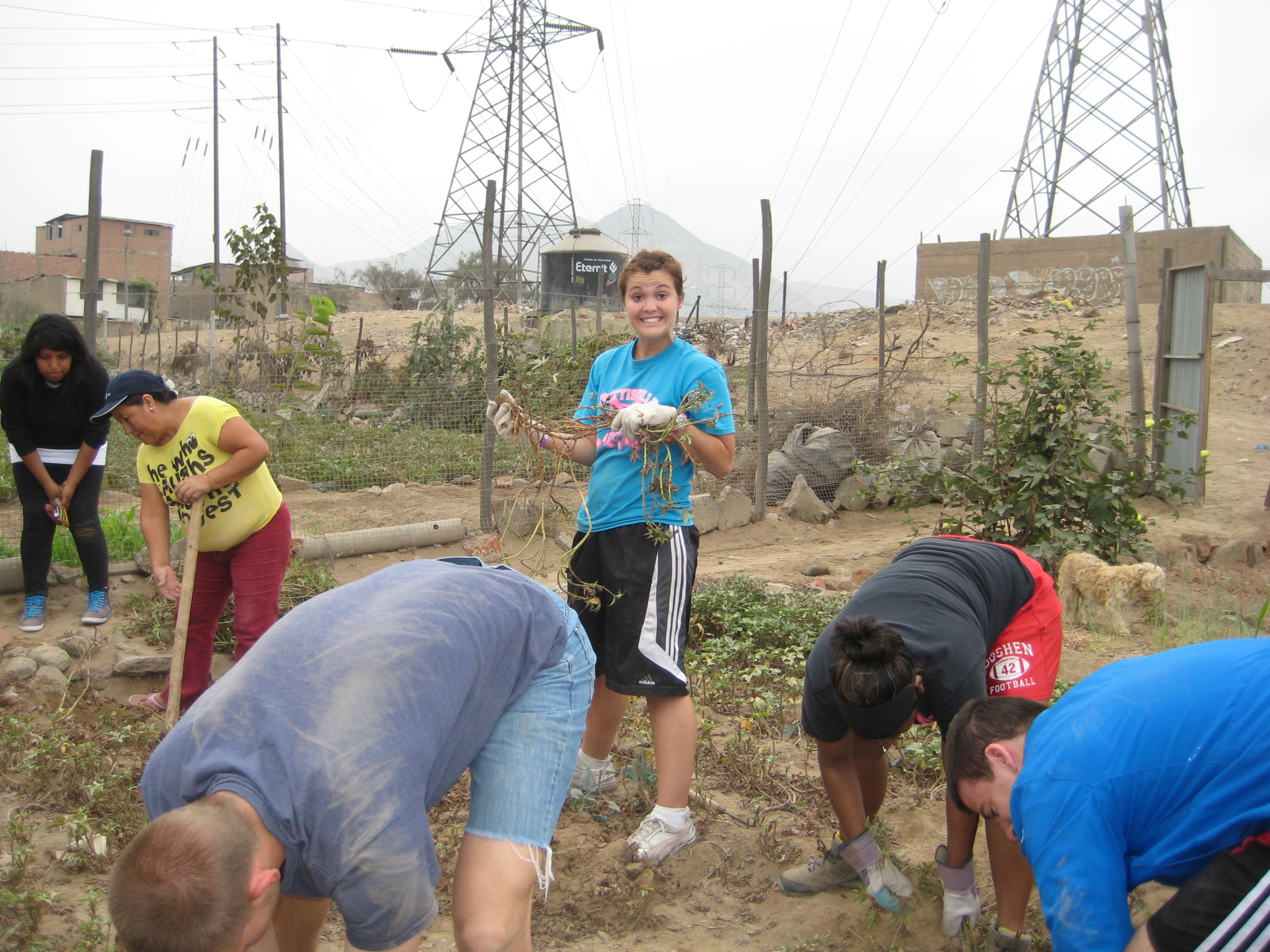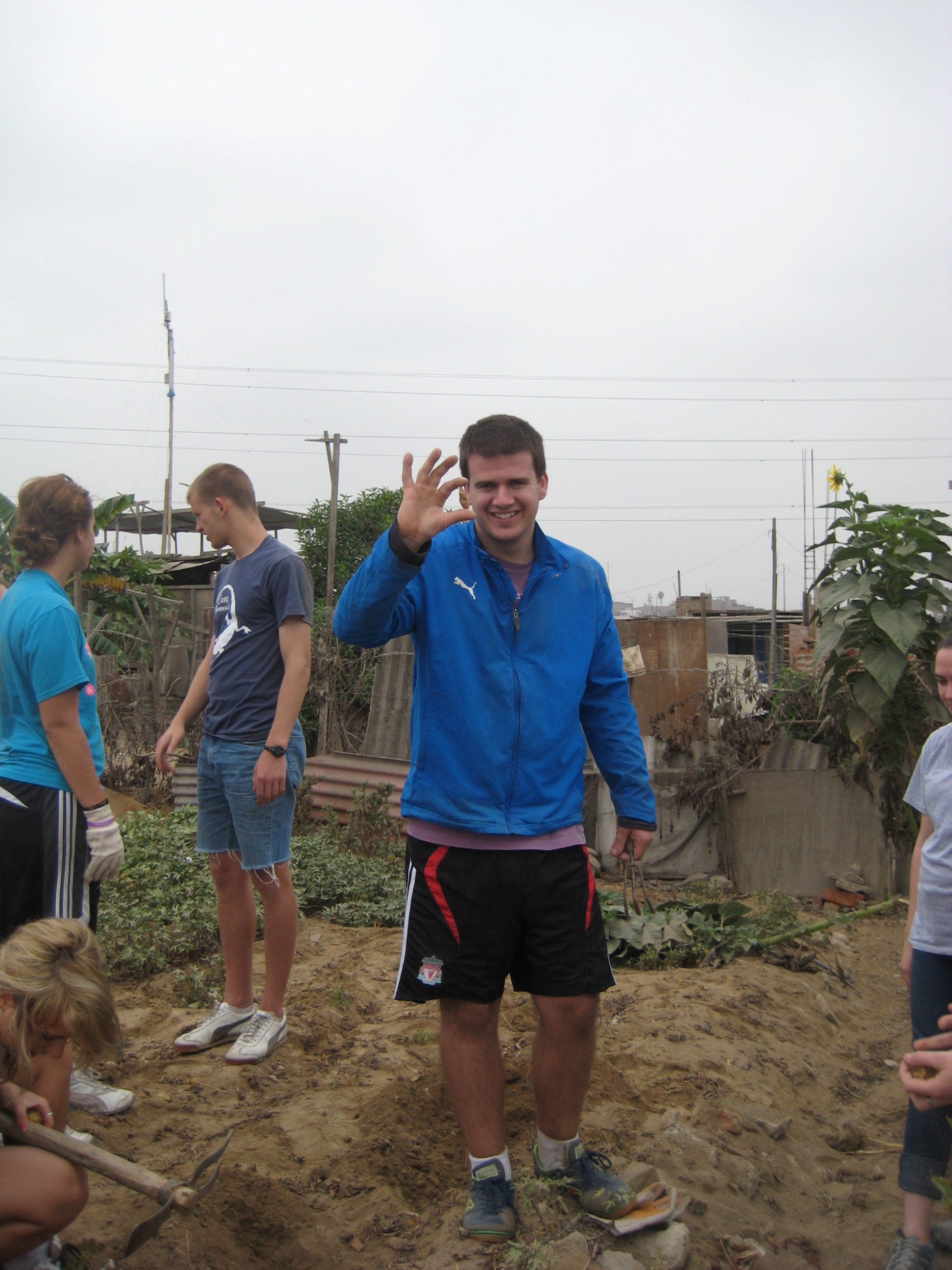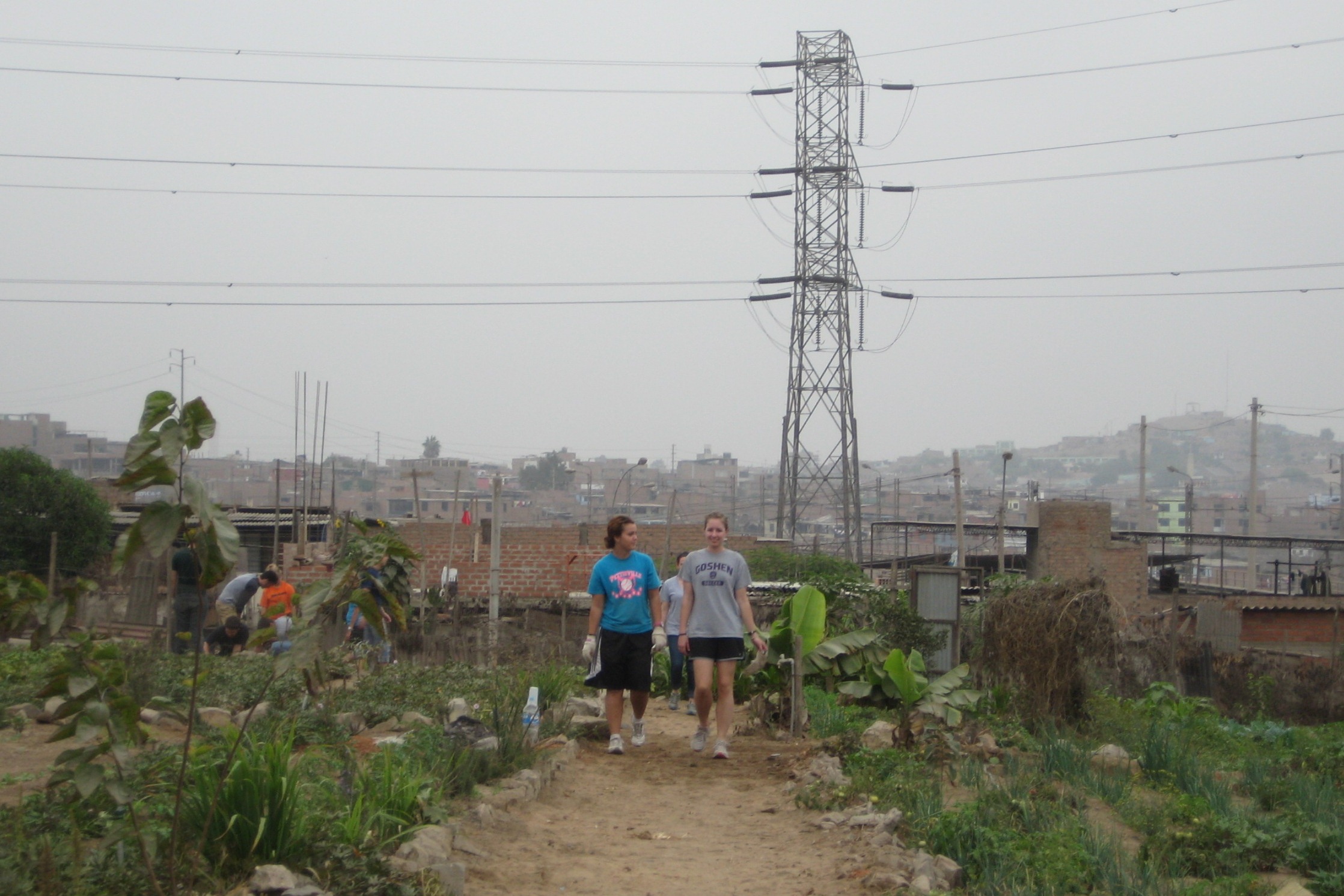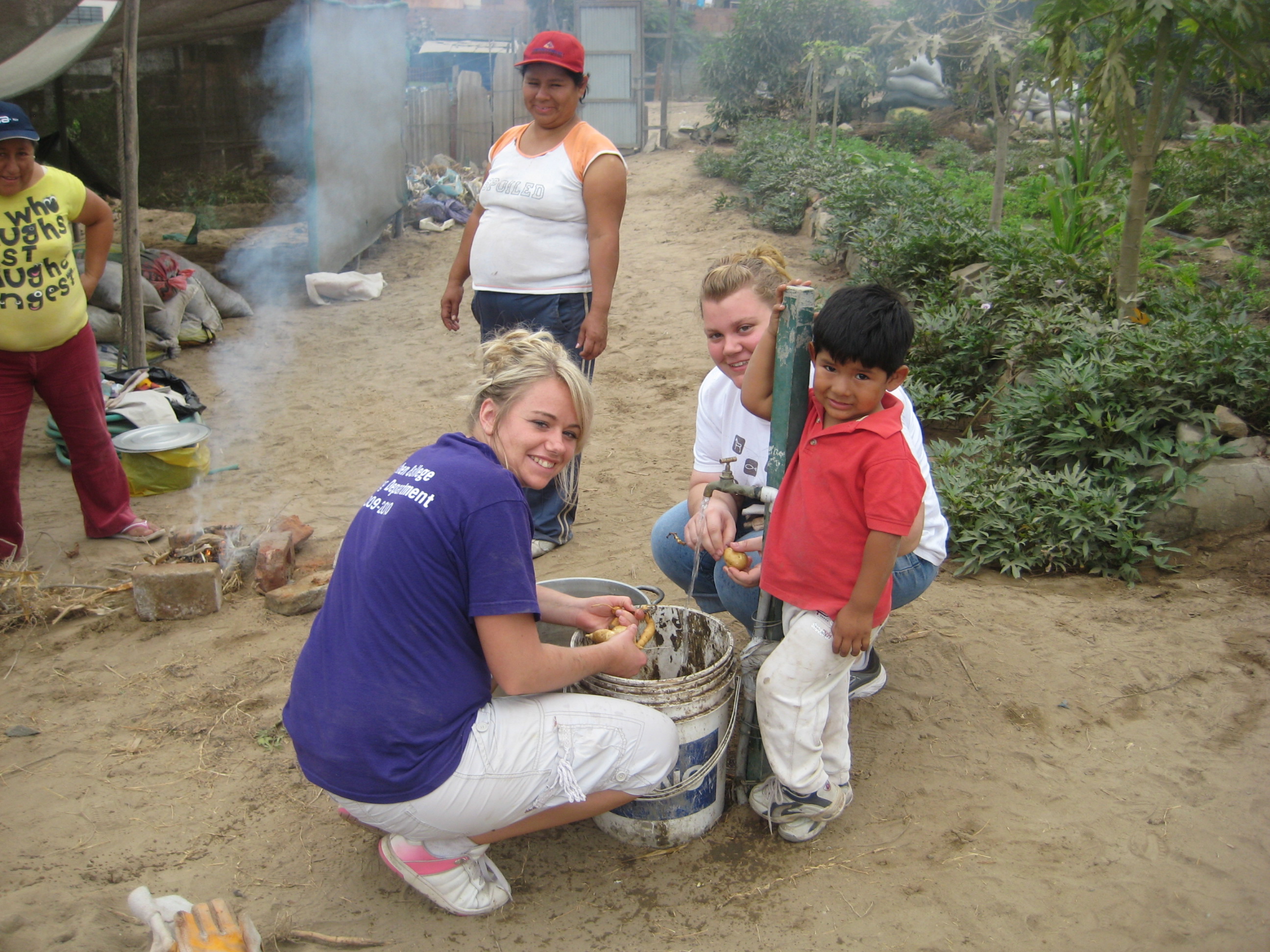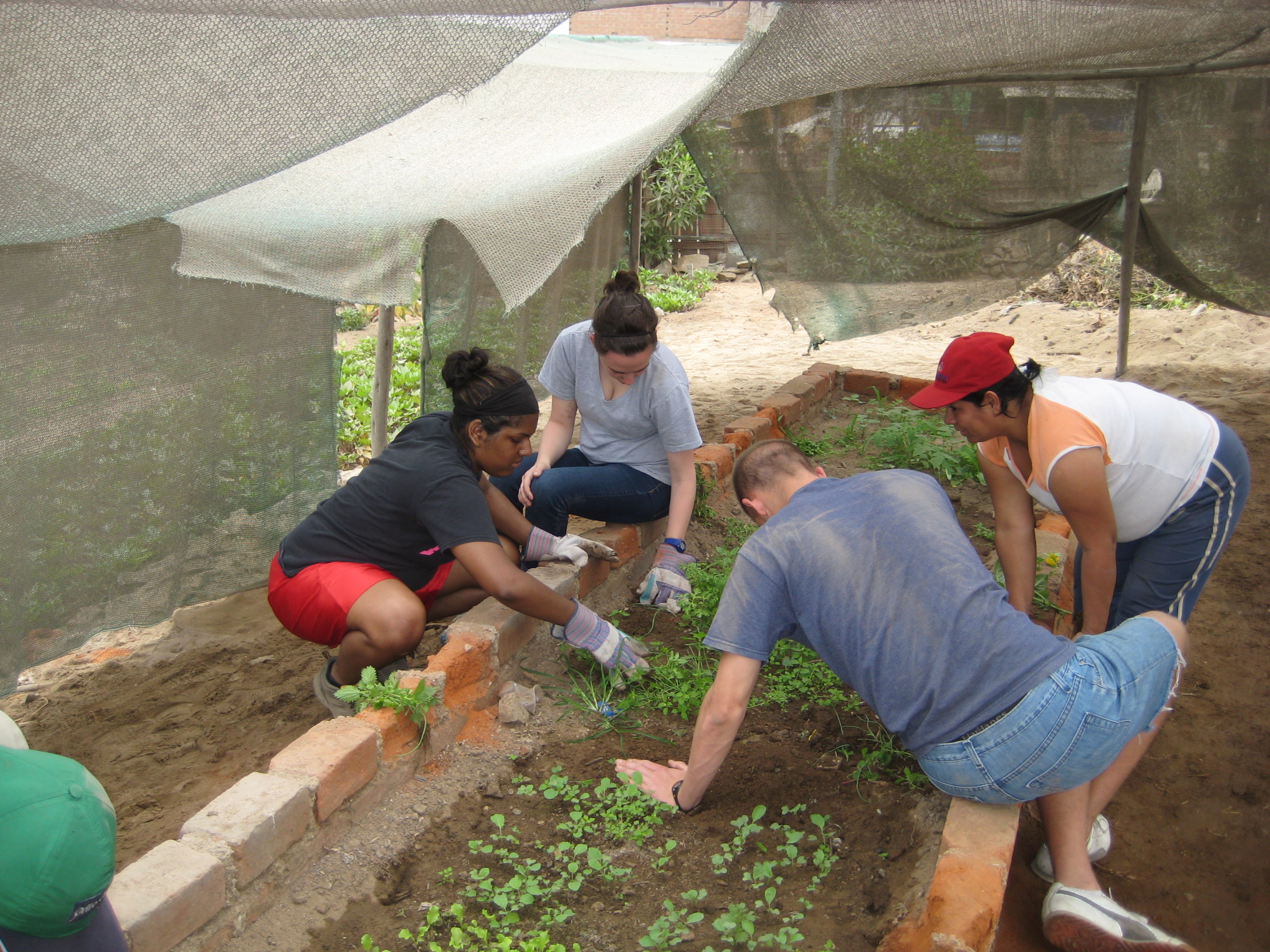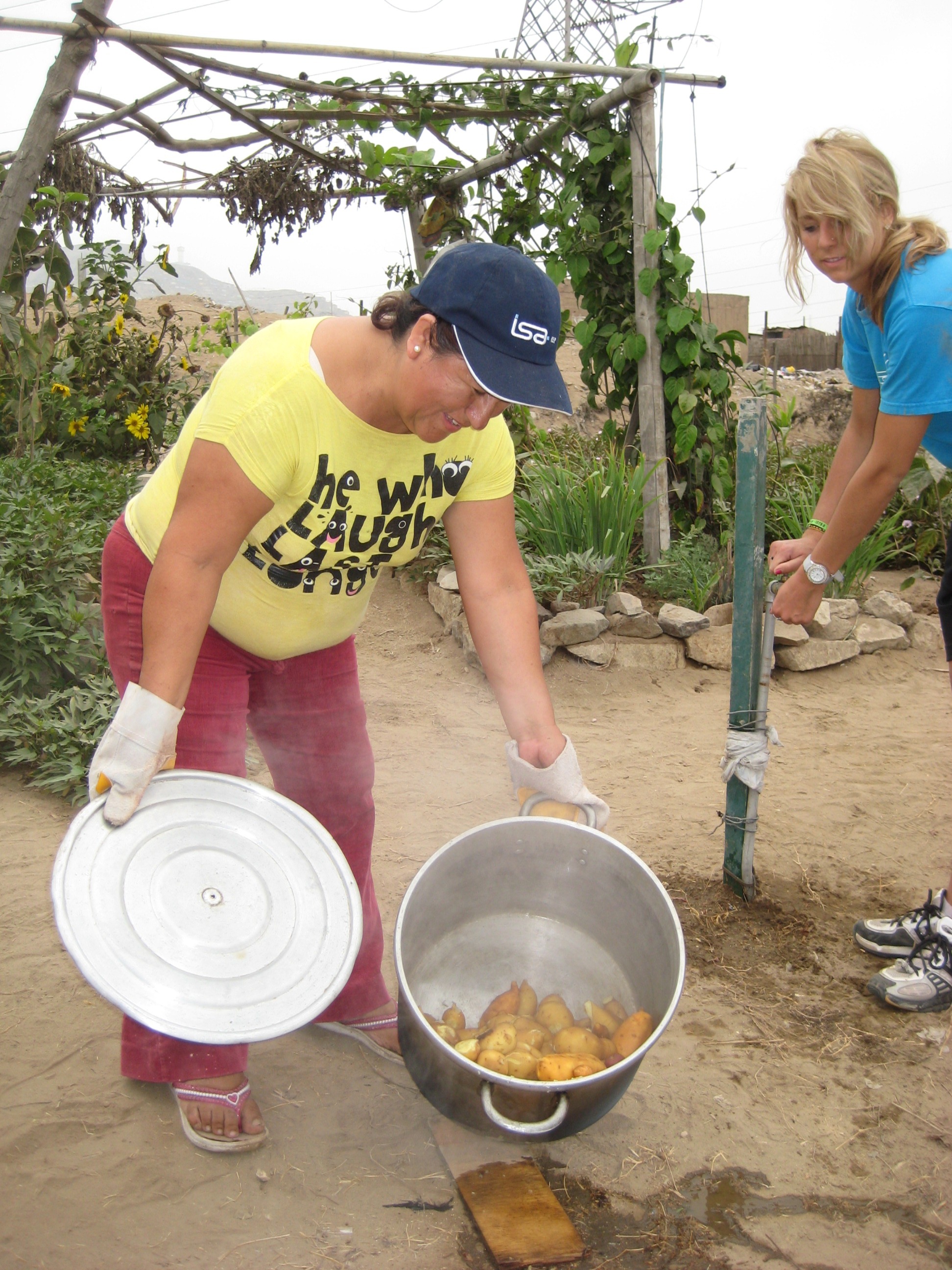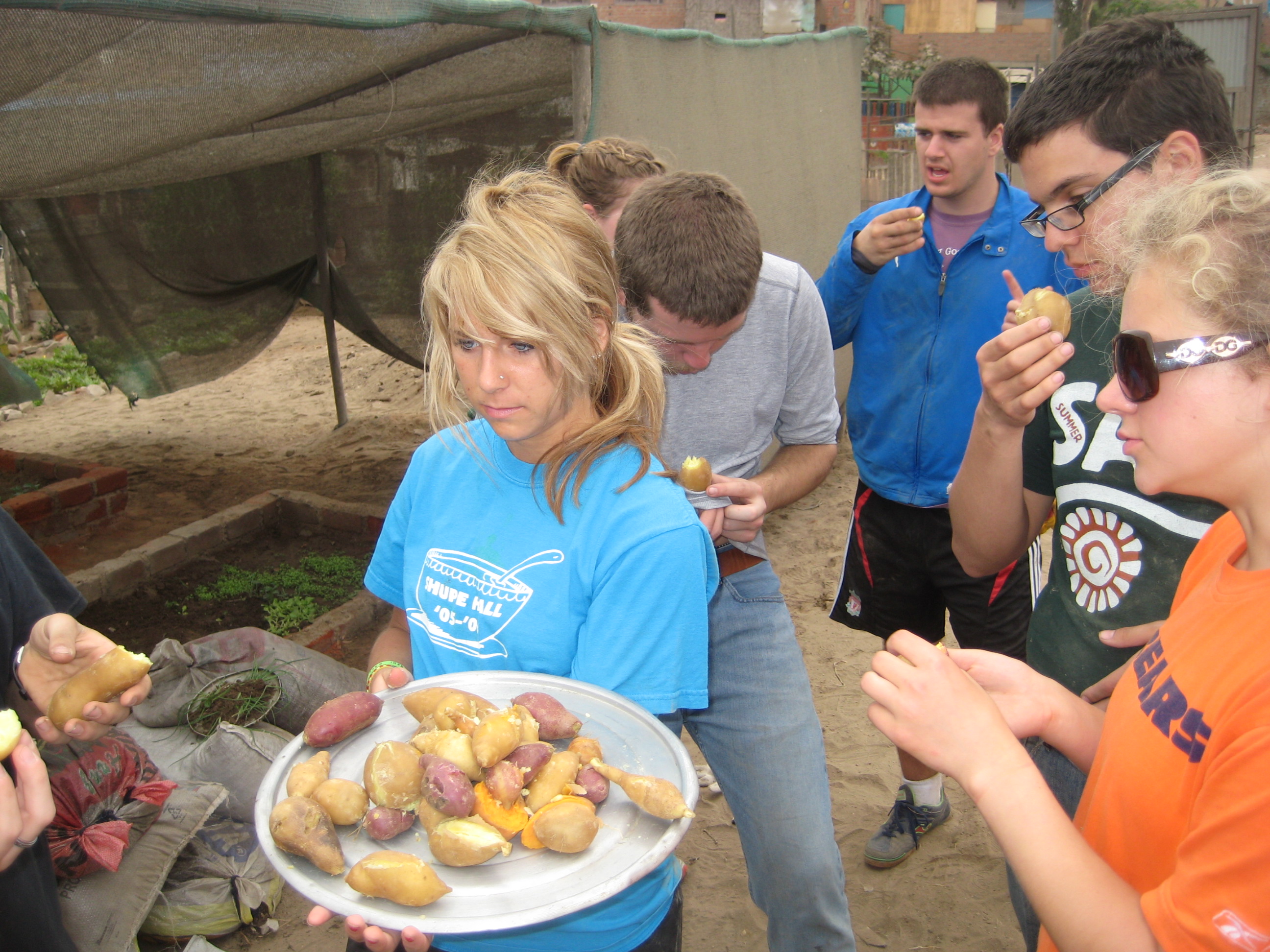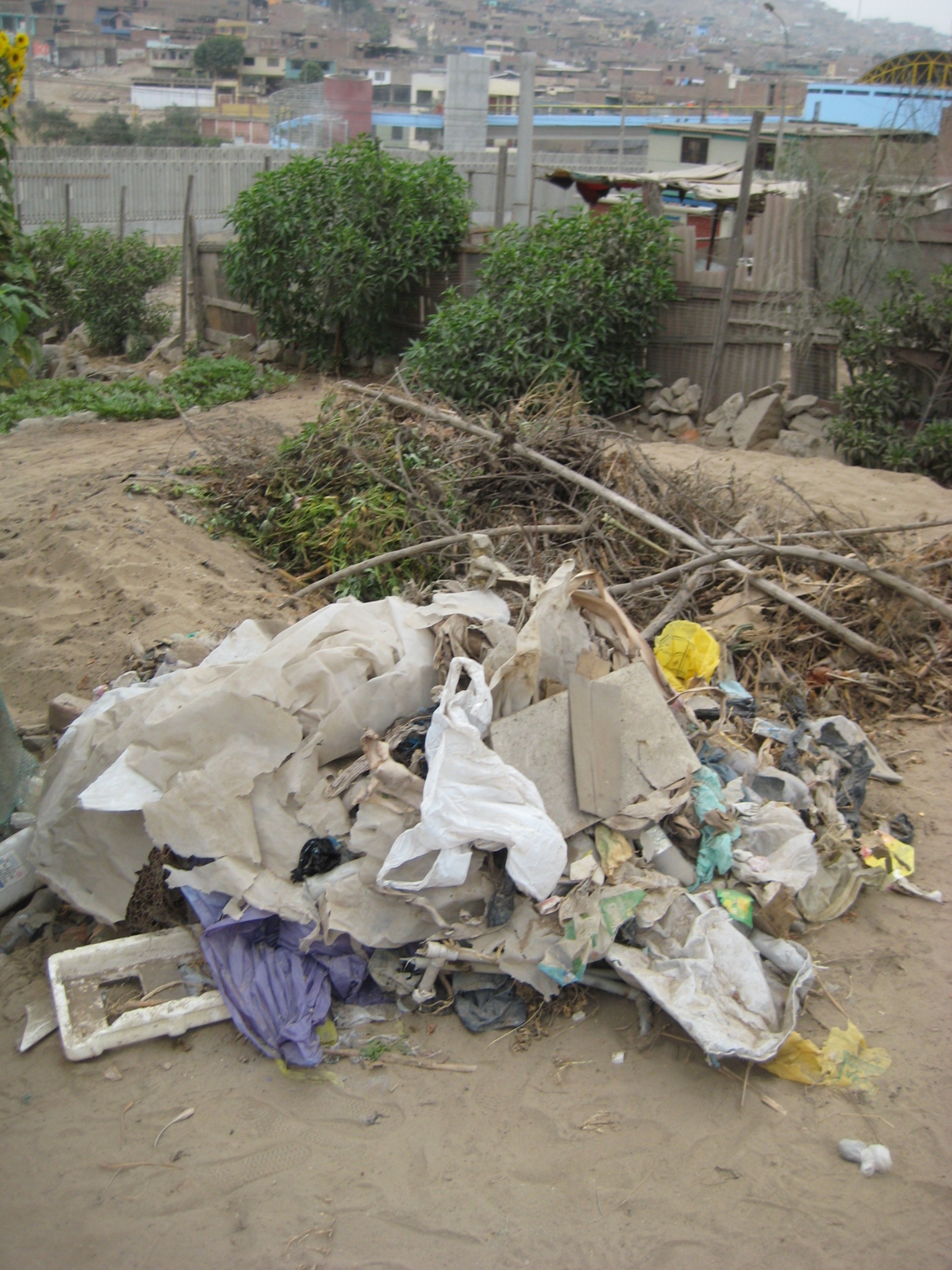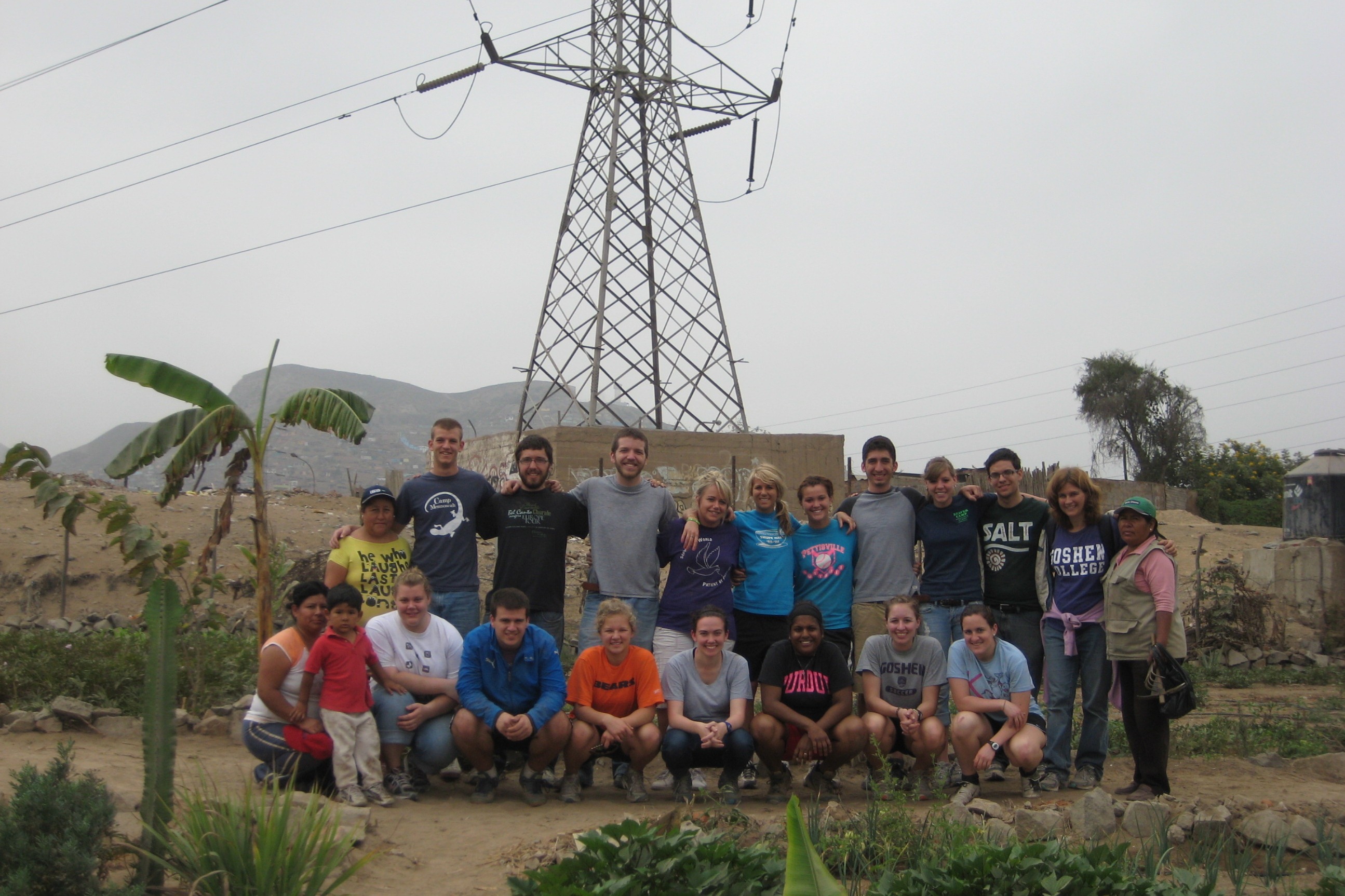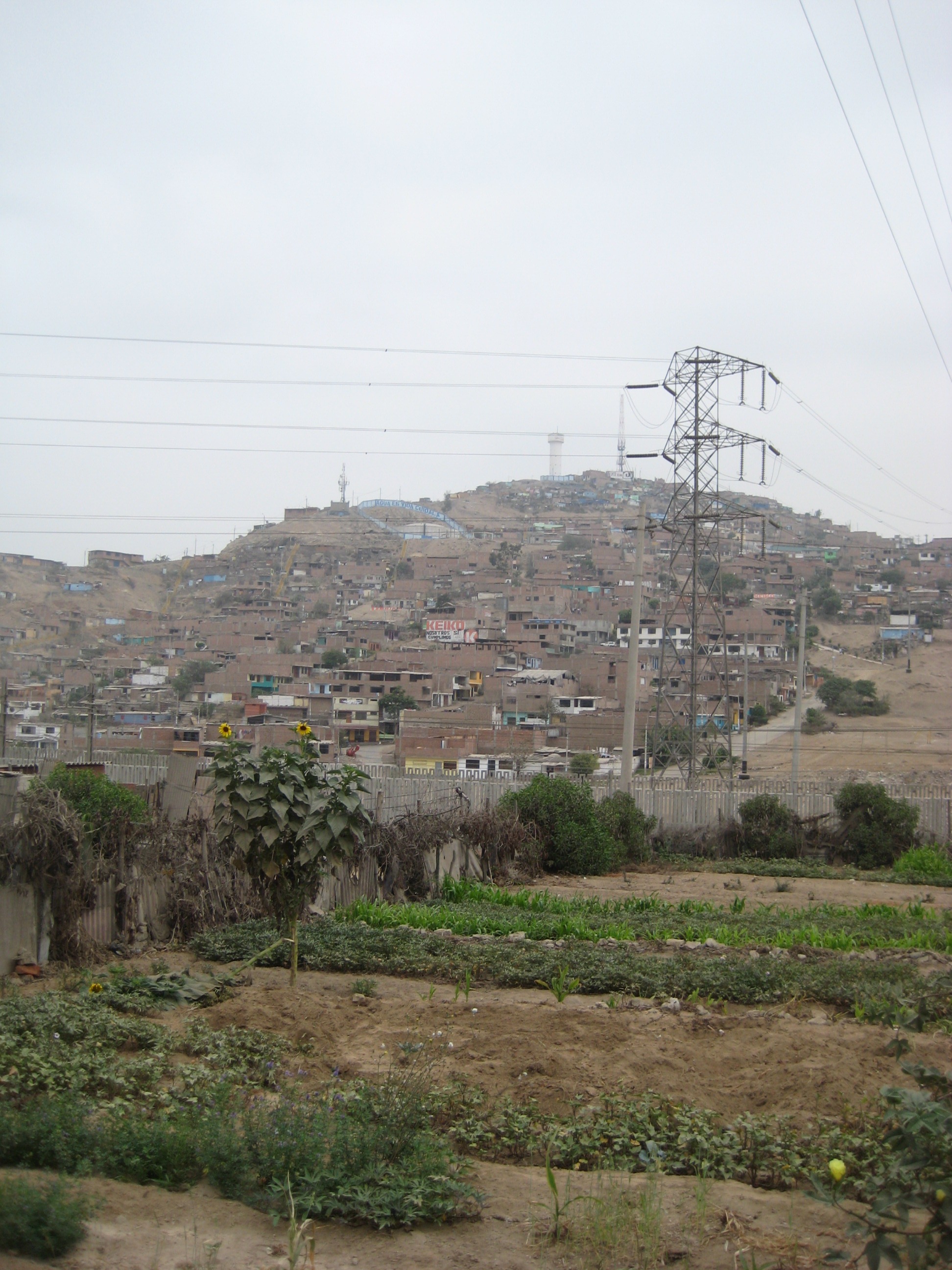Digging in
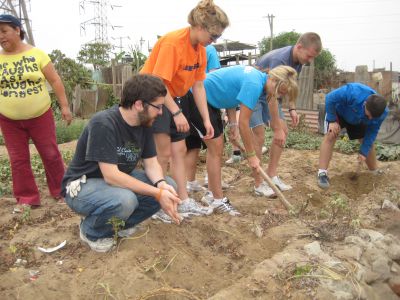
We spent Thursday and Friday in Villa Maria del Triunfo, a district on the southern edge of Lima in what is called the “Southern Cone.” (Lima also has a Northern Cone and an Eastern Cone, and all three areas developed rapidly over the last 50 years when people migrated from the provinces.)
Villa Maria itself was founded 50 years ago this year and is home to about 380,000 residents. One of those residents is our program assistant, Alicia, who welcomed us and shared stories about the area’s development.
When she and other original residents of her neighborhood moved in during the mid-1970s, they lacked water, electricity, and roads, and they constructed their first homes out of reed mats. People continued to settle in the area (often by staging “invasions,” in which large groups of people in need of housing organize to “invade” an empty piece of land that may be publicly or privately owned), and eventually infrastructure followed.
Even today, however, many residents of Villa Maria live in poverty, and malnutrition is a common problem. The local government partnered with the electric company, local volunteers, and an international NGO to cultivate community gardens, or biohuertos, on uninhabitable land under power lines. Now, all kinds of fruits, vegetables and herbs grow in the sandy plots: potatoes, carrots, tomatoes, eggplants, cabbage, beets, peppers, lettuce, rosemary, oregano, and strawberries.
The SSTers spent two mornings at a few of the biohuertos. They worked alongside local gardeners and planted seeds, cleared brush, removed trash, transported many bags of fertilizer, and harvested potatoes. We enjoyed a few of the fruits (and tubers) of the garden—maracuyás and aguaymantos, as well as a tasty potato feast.
